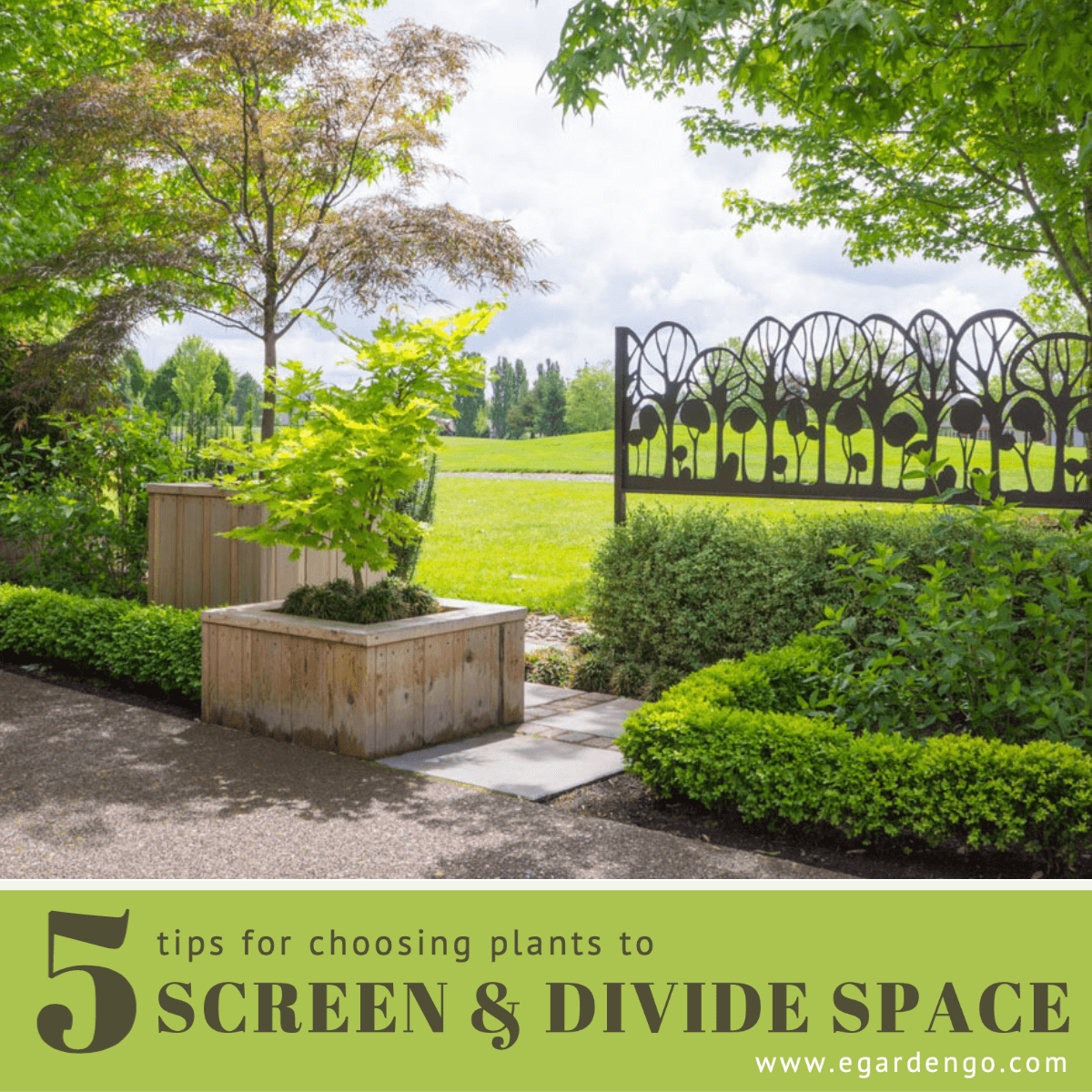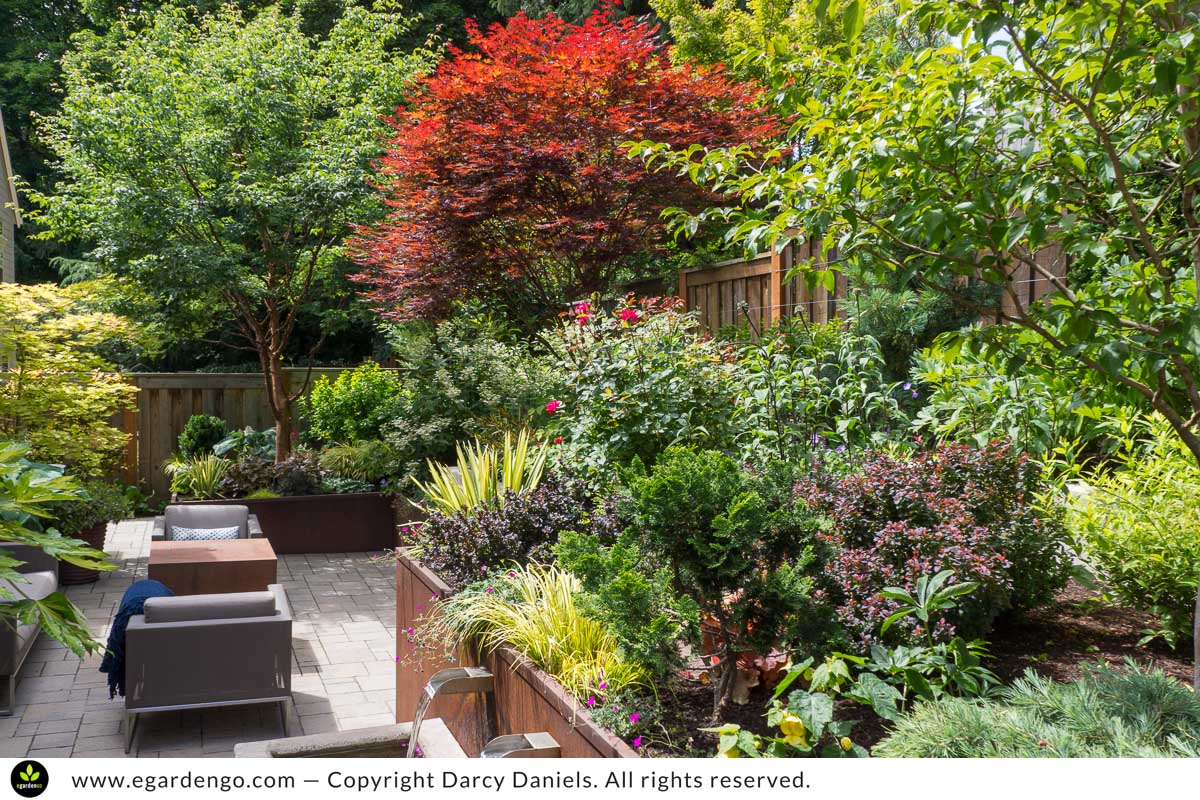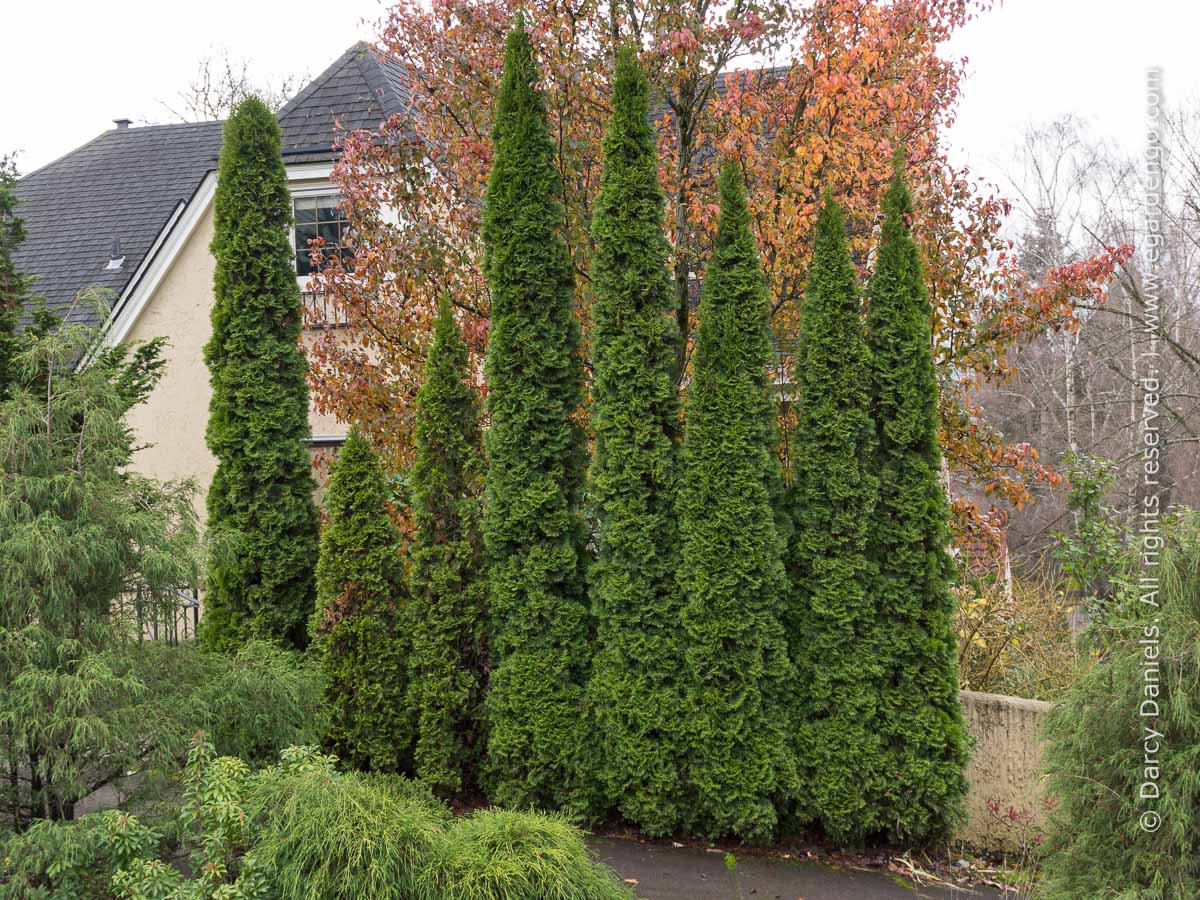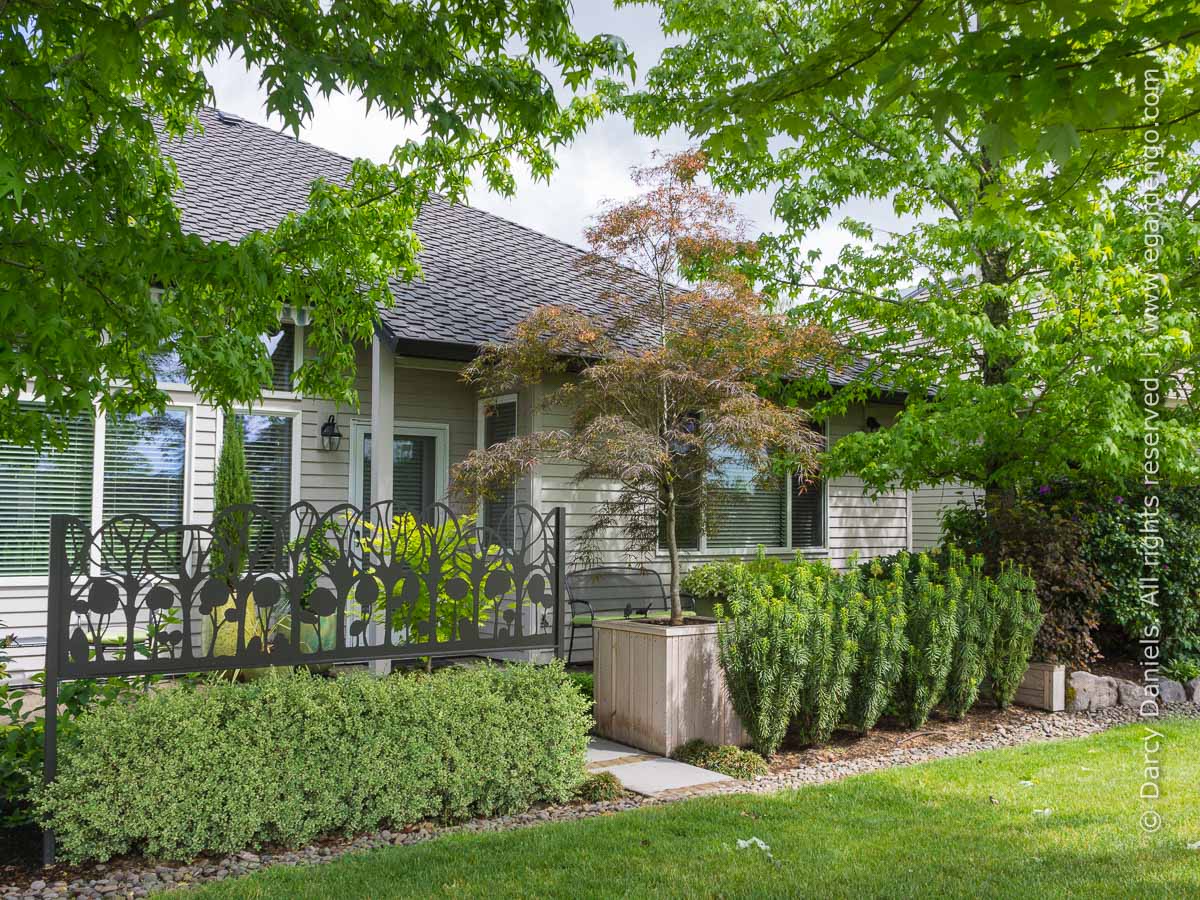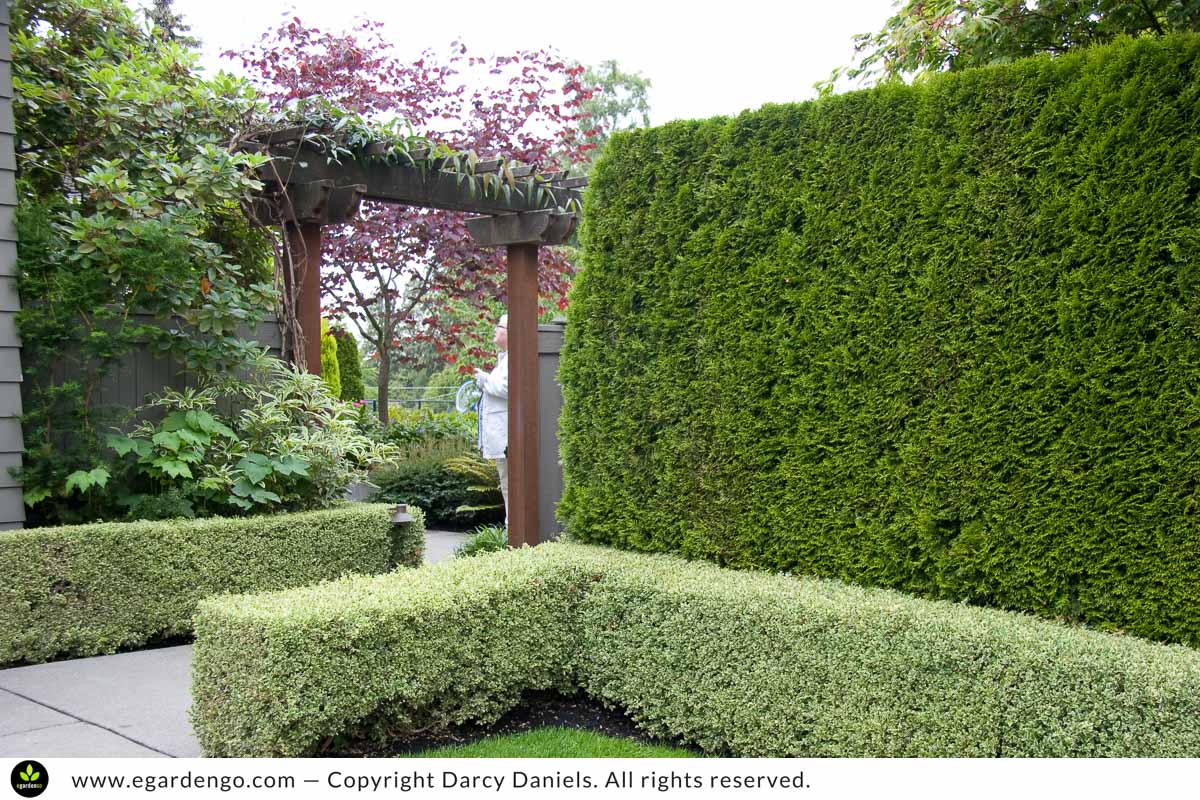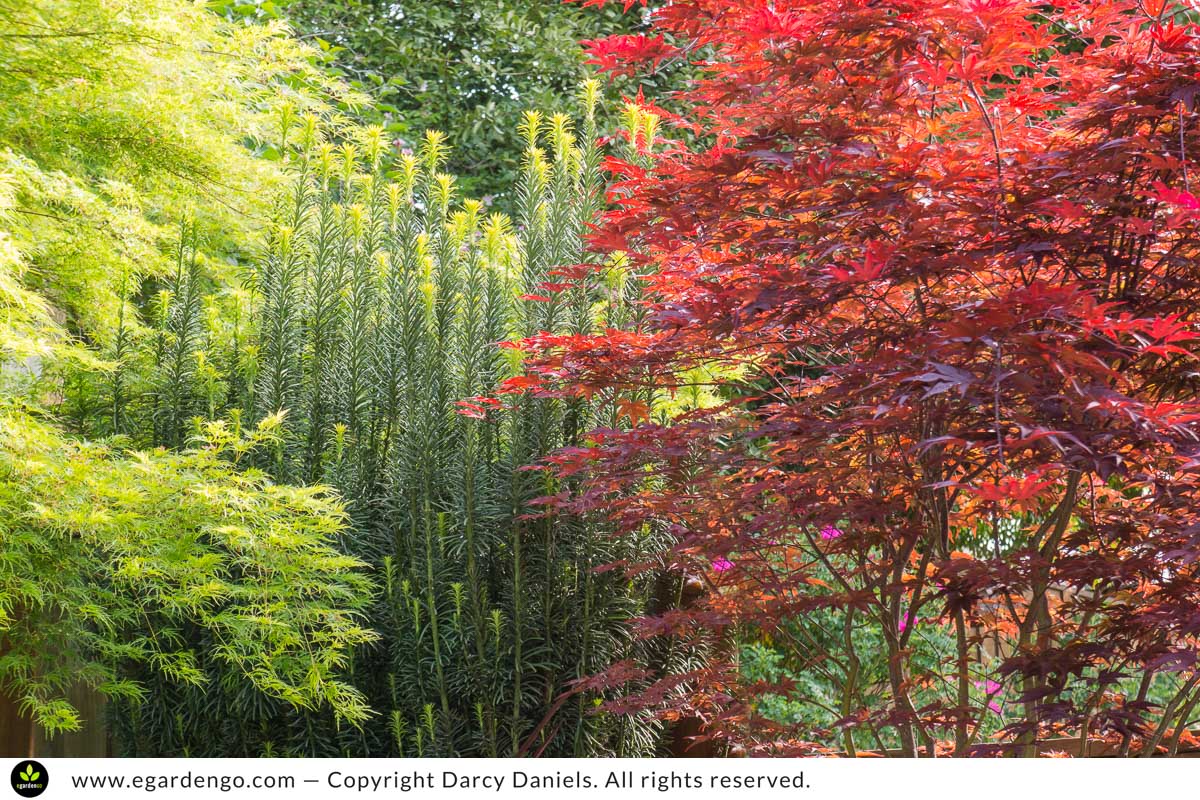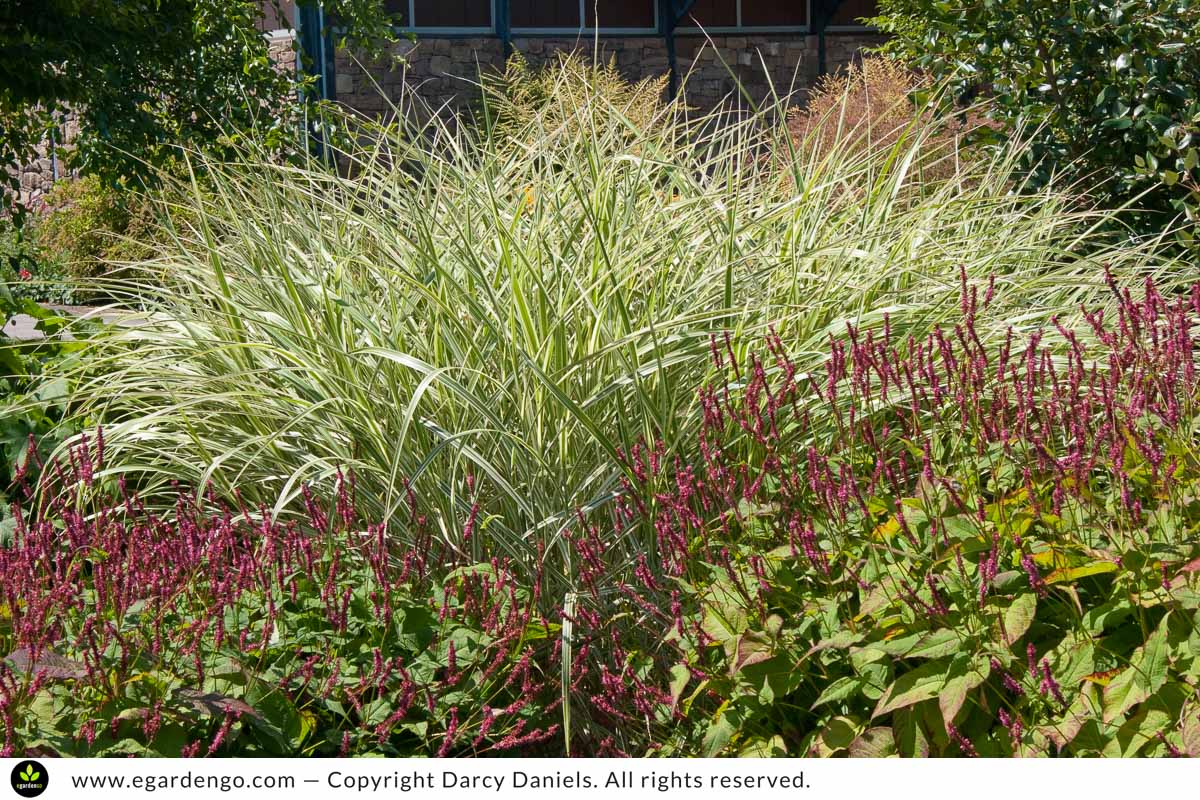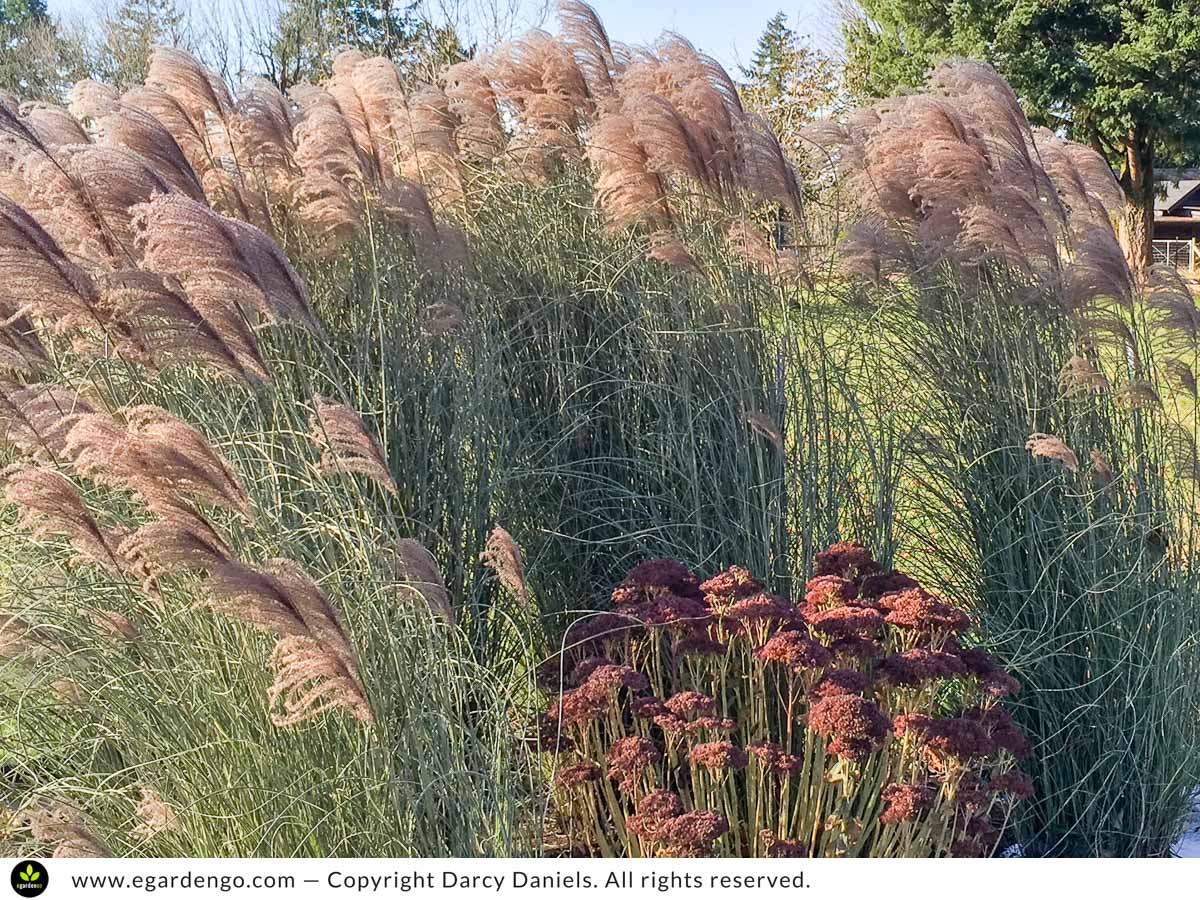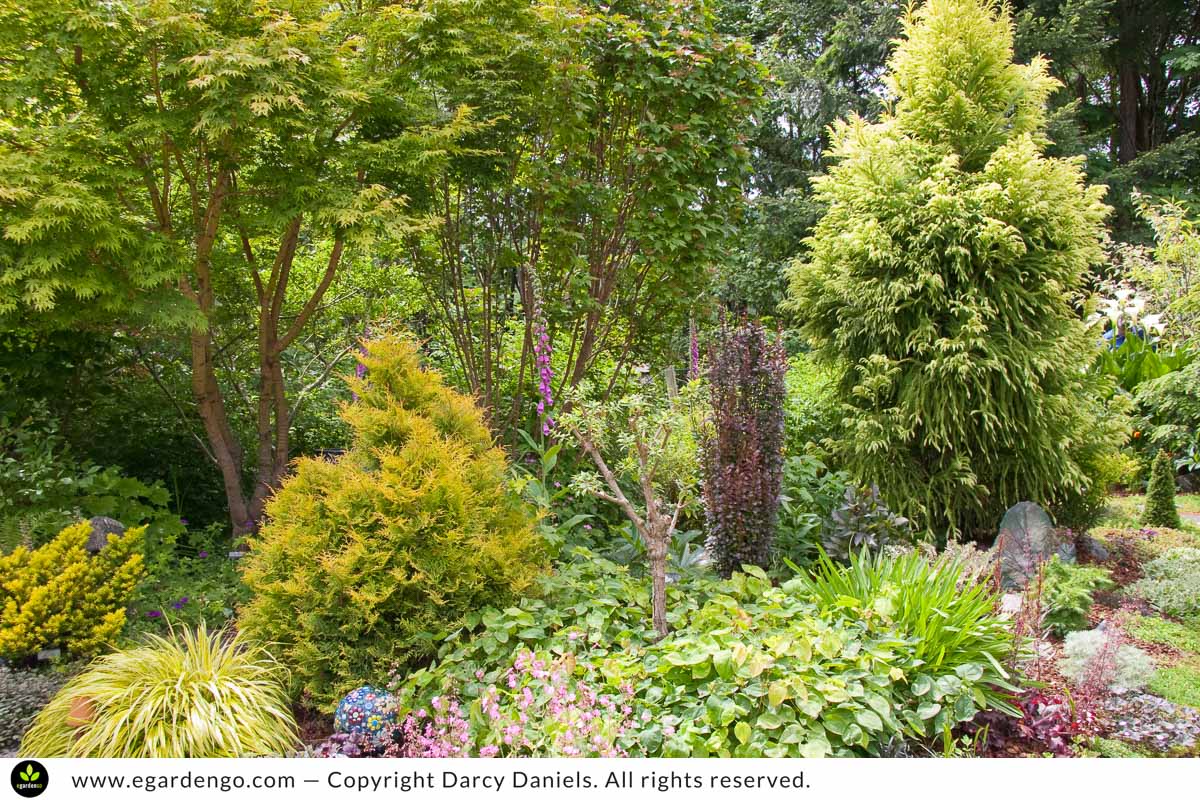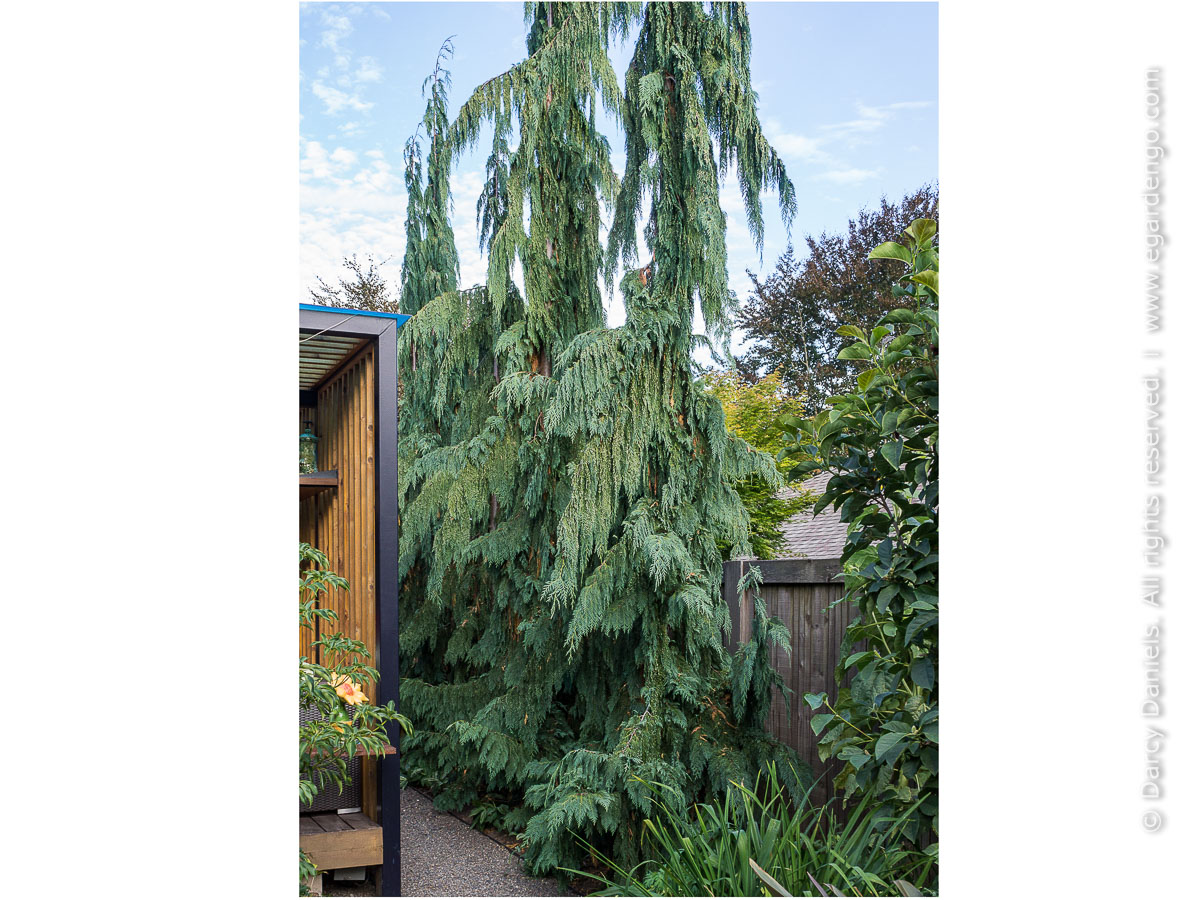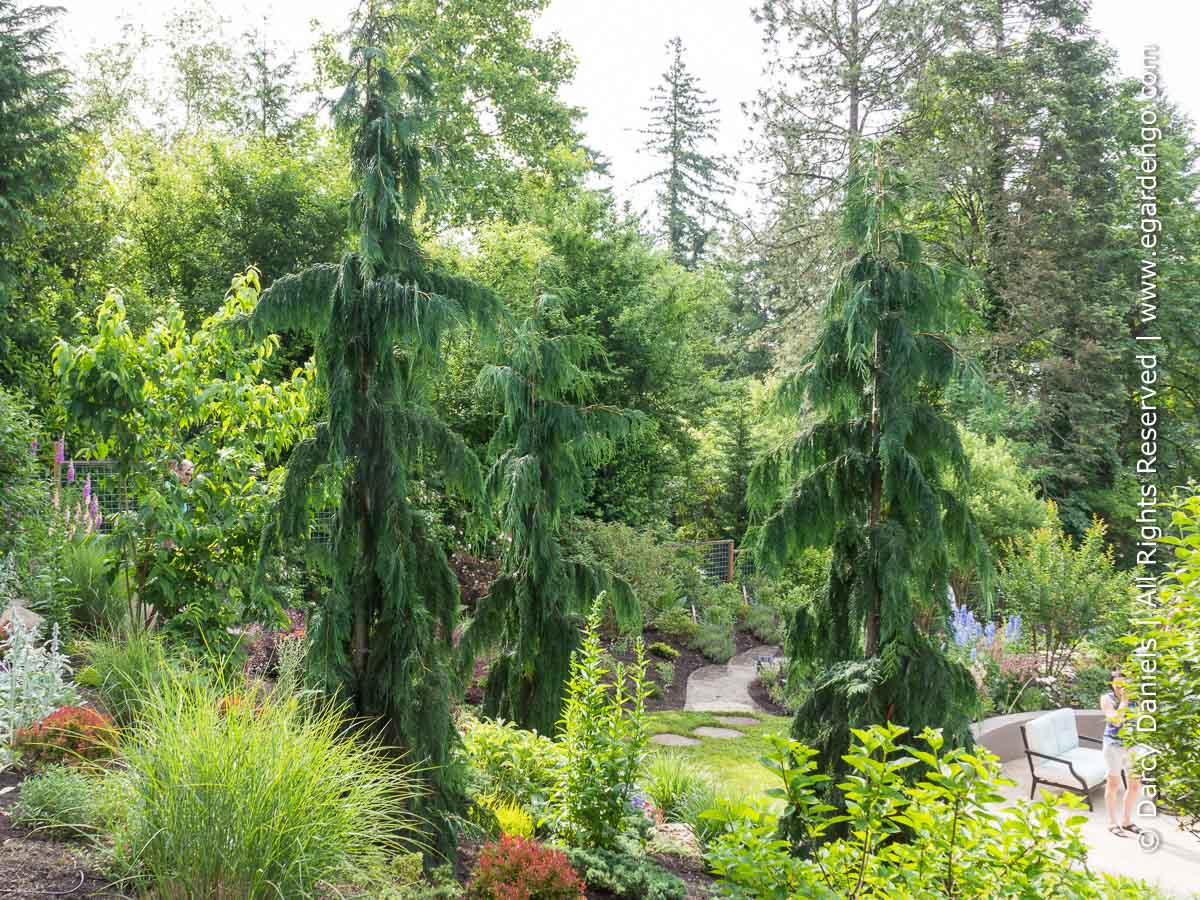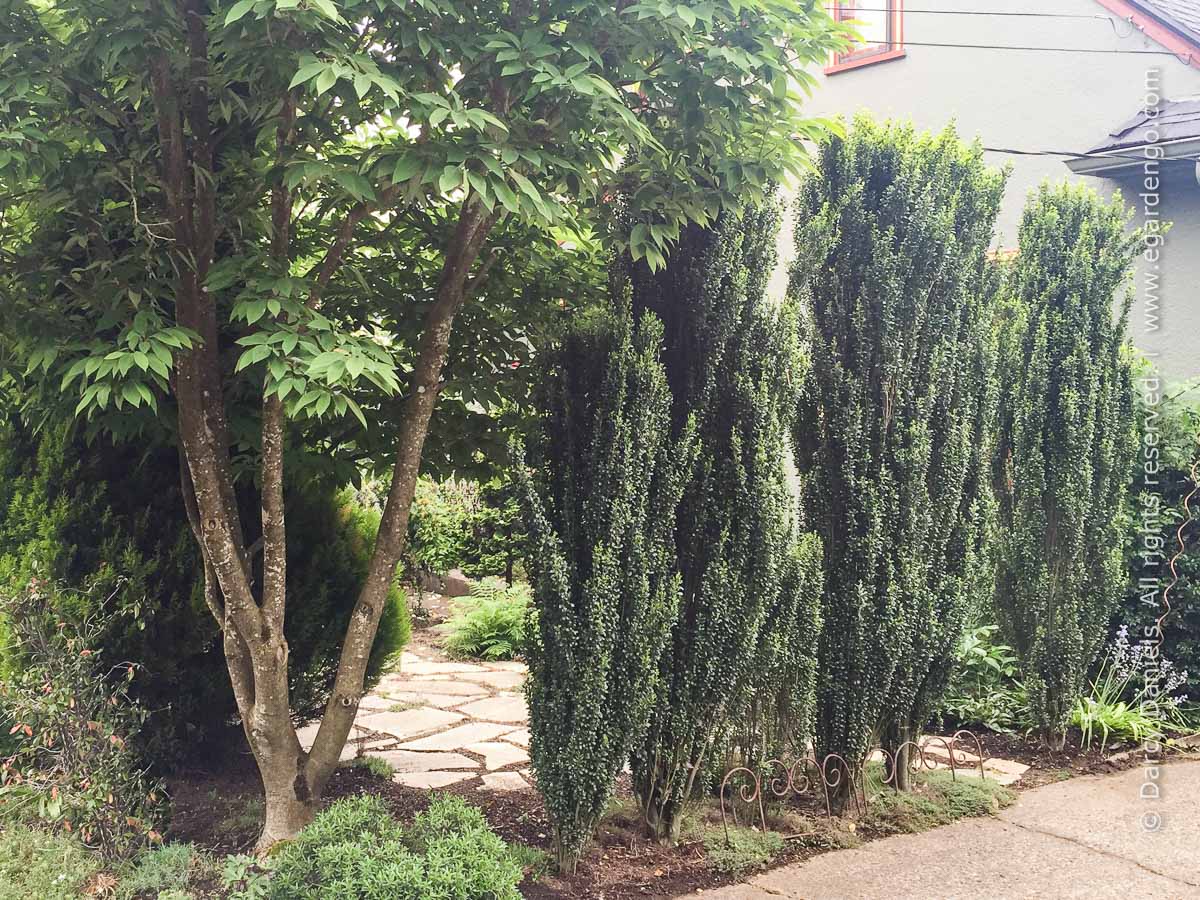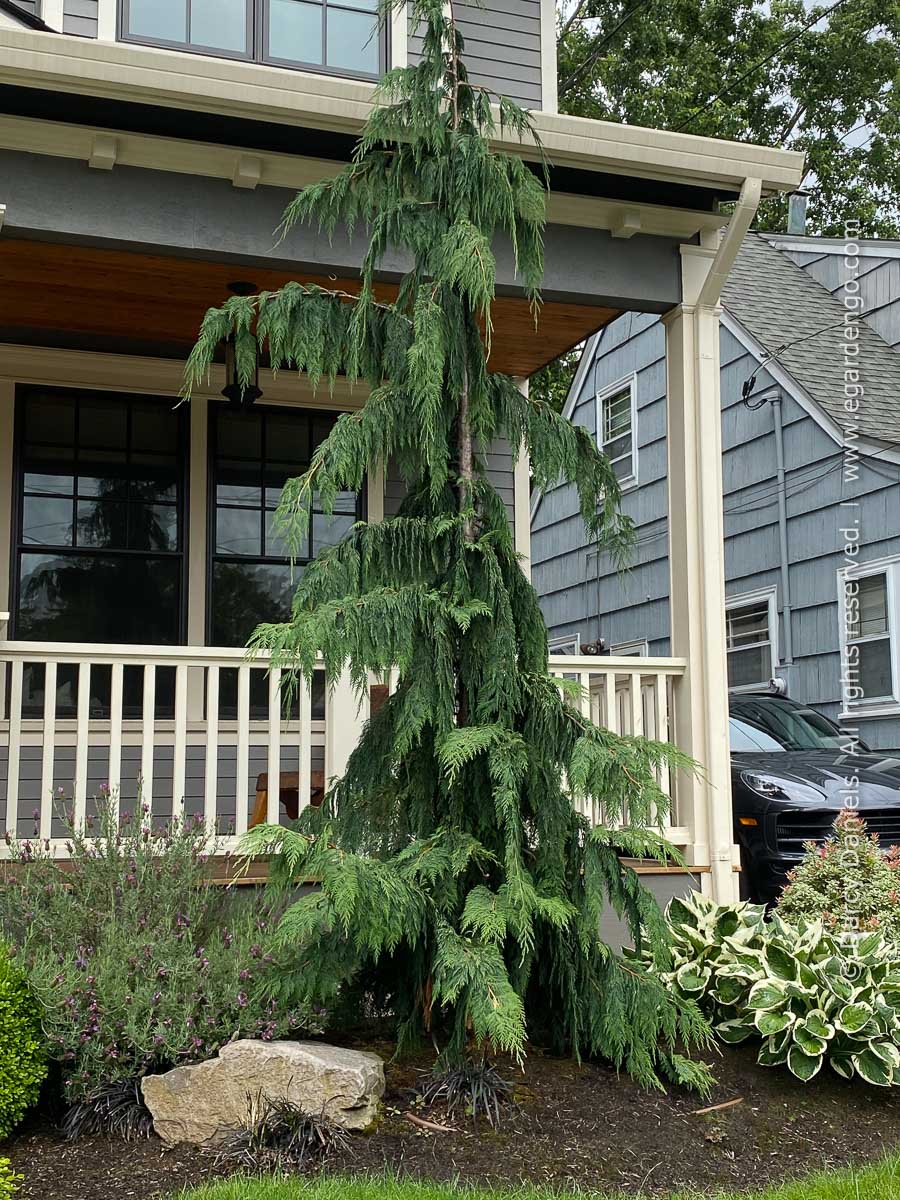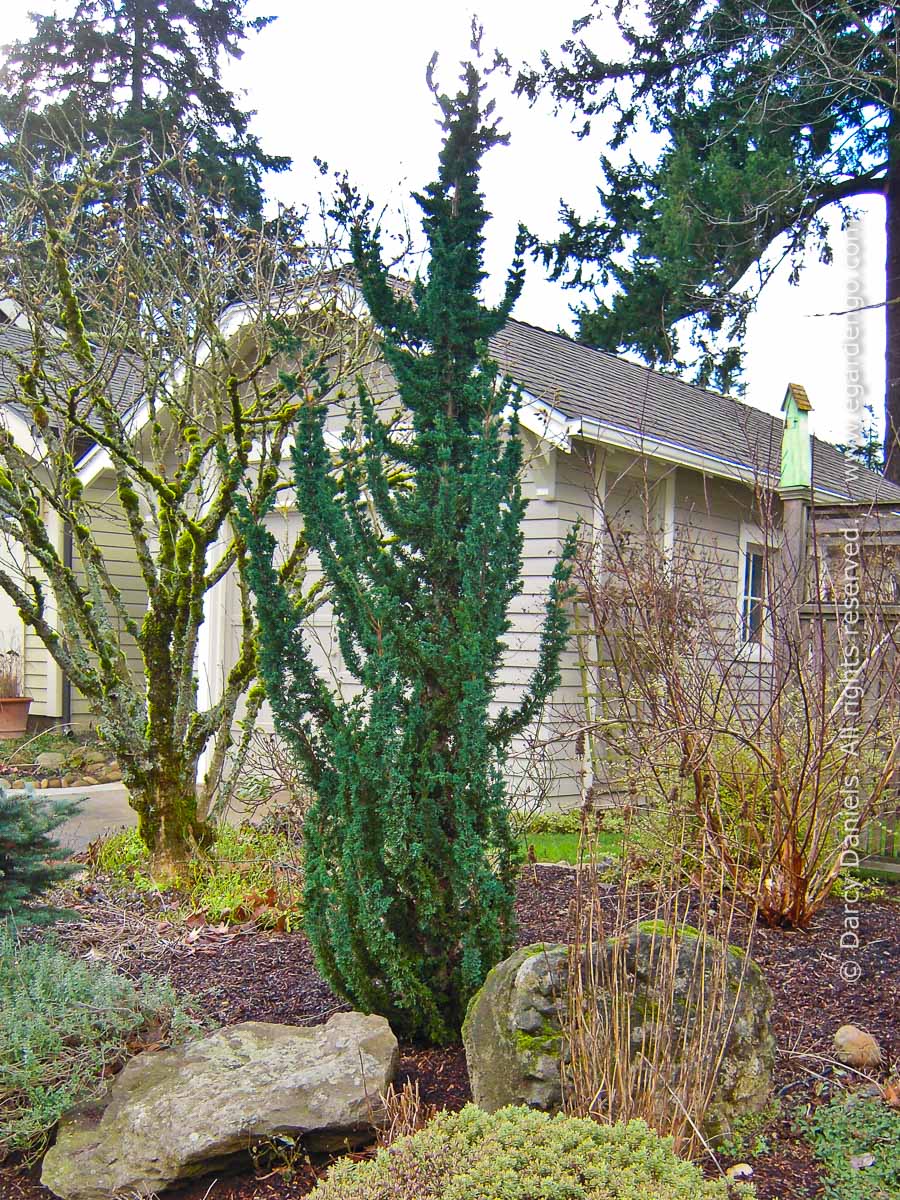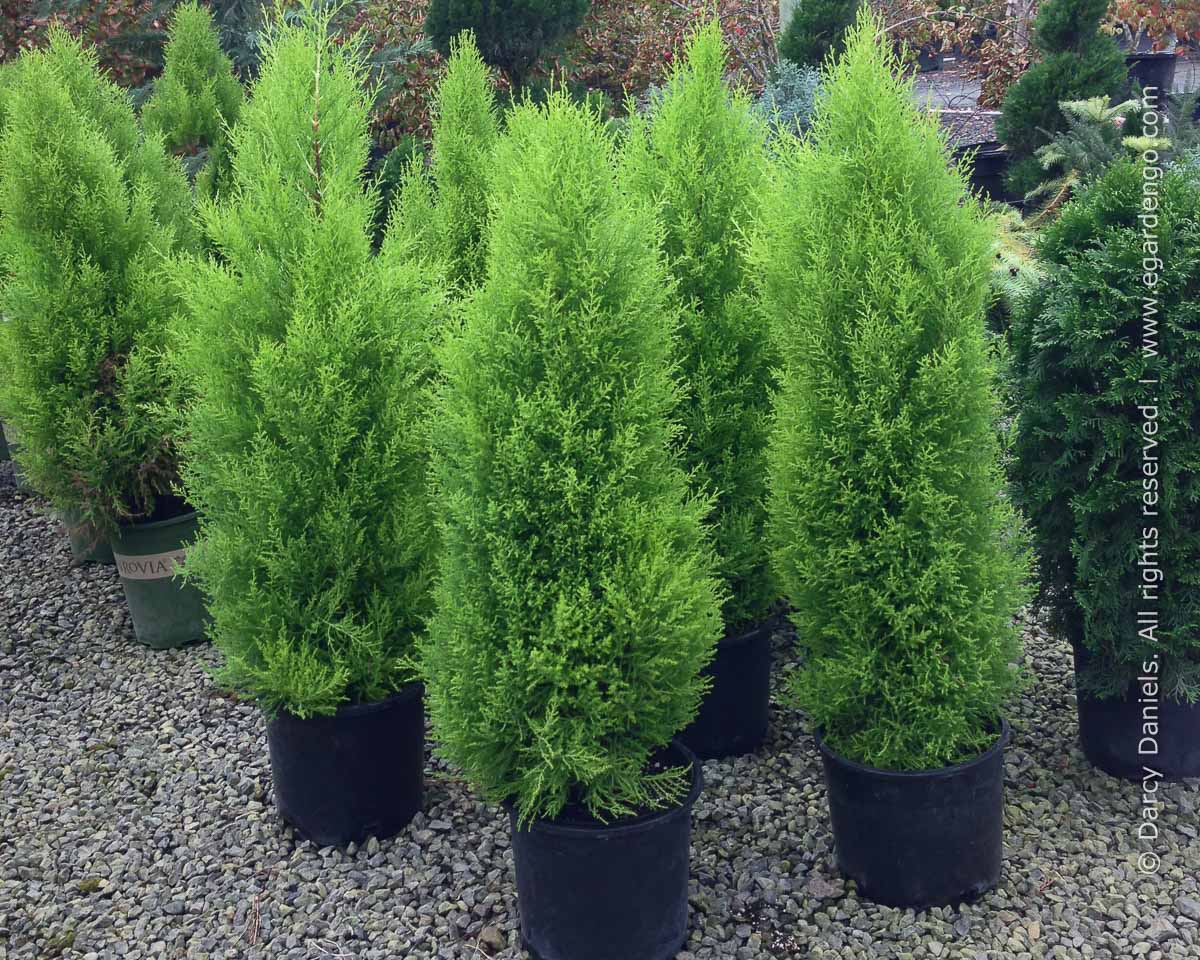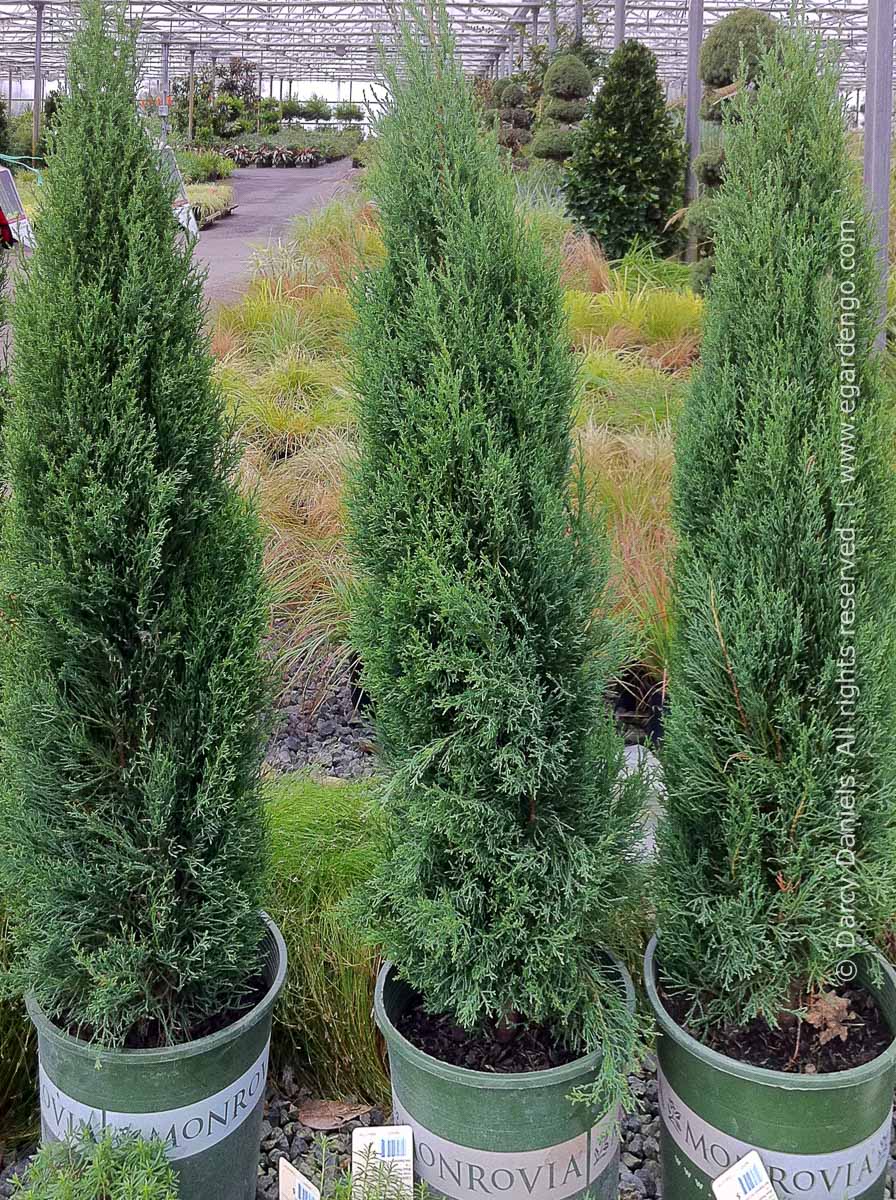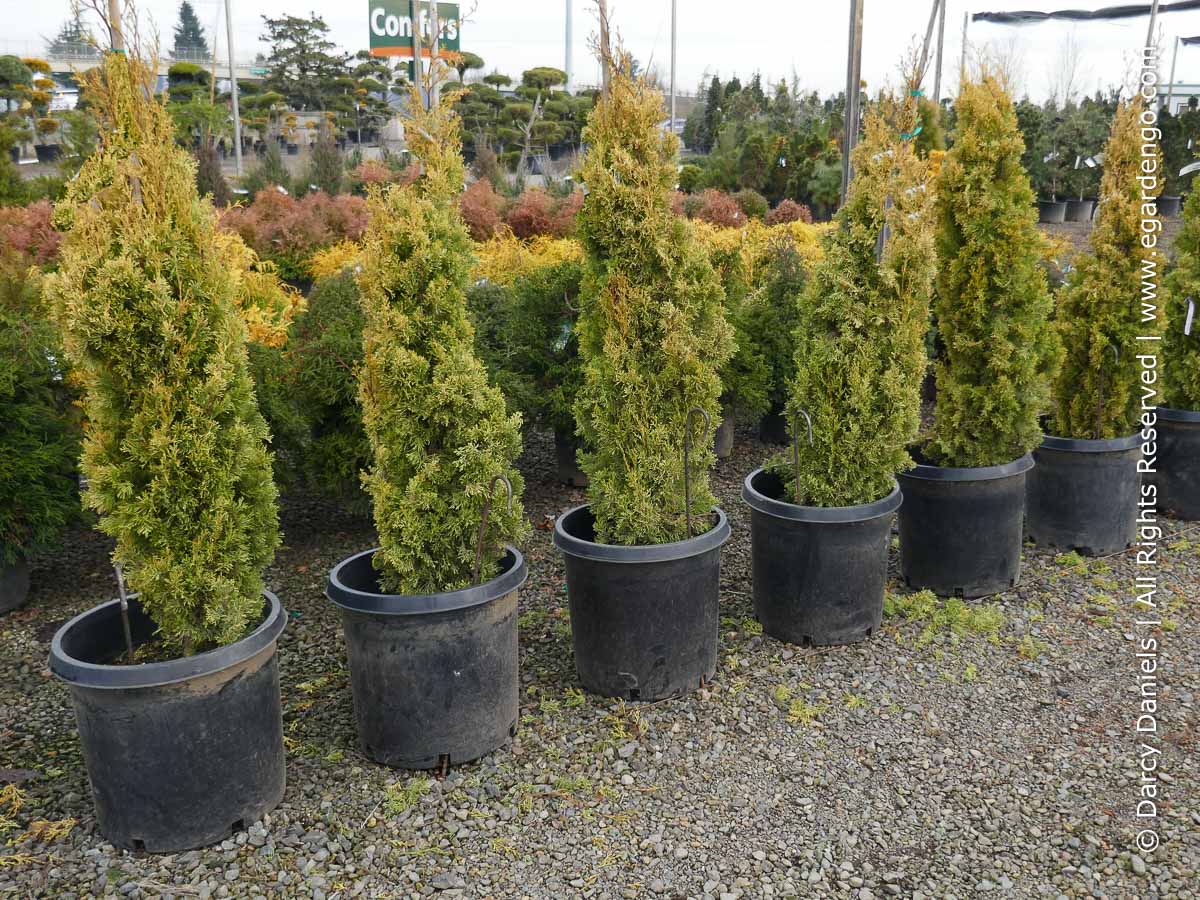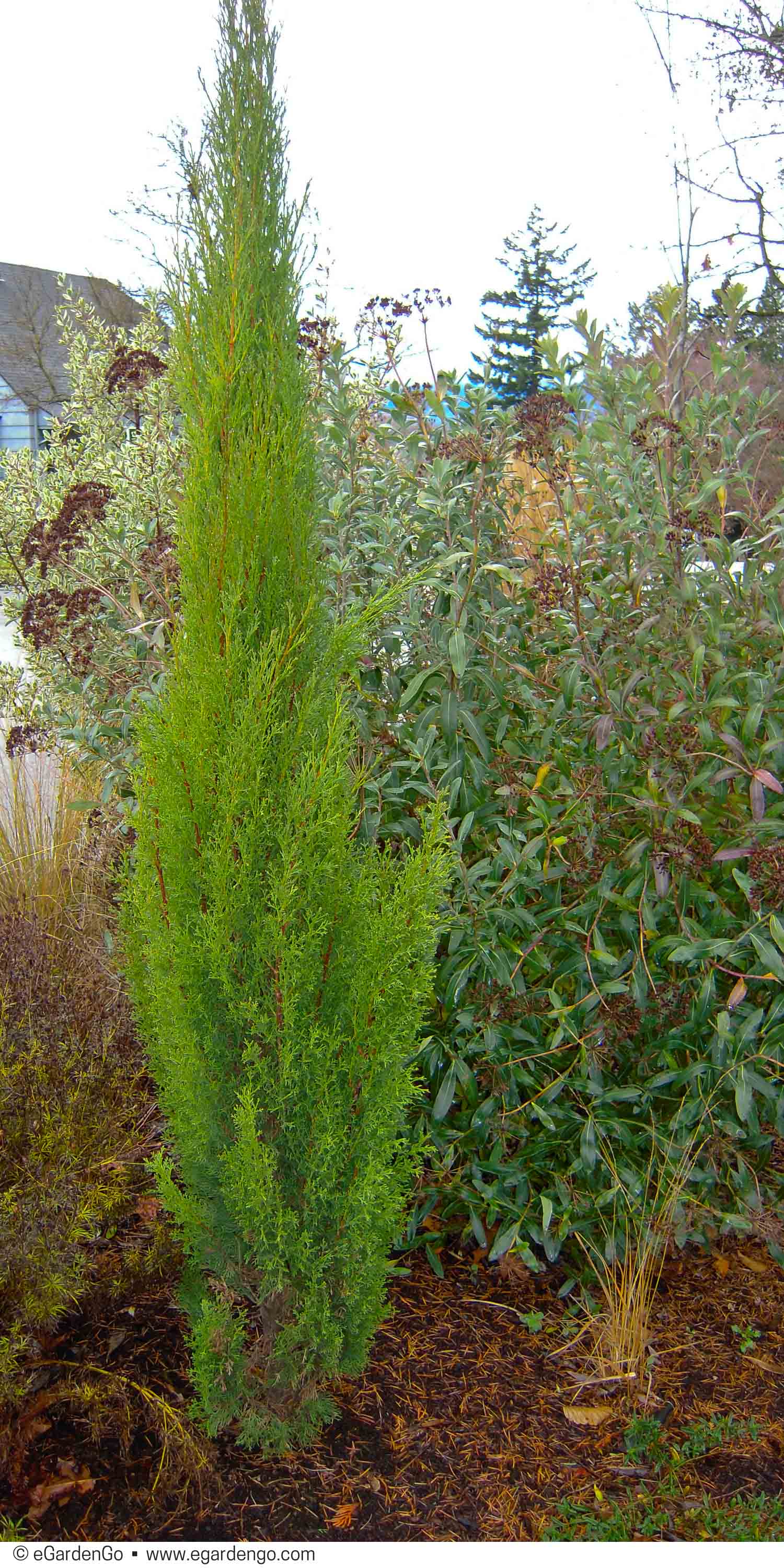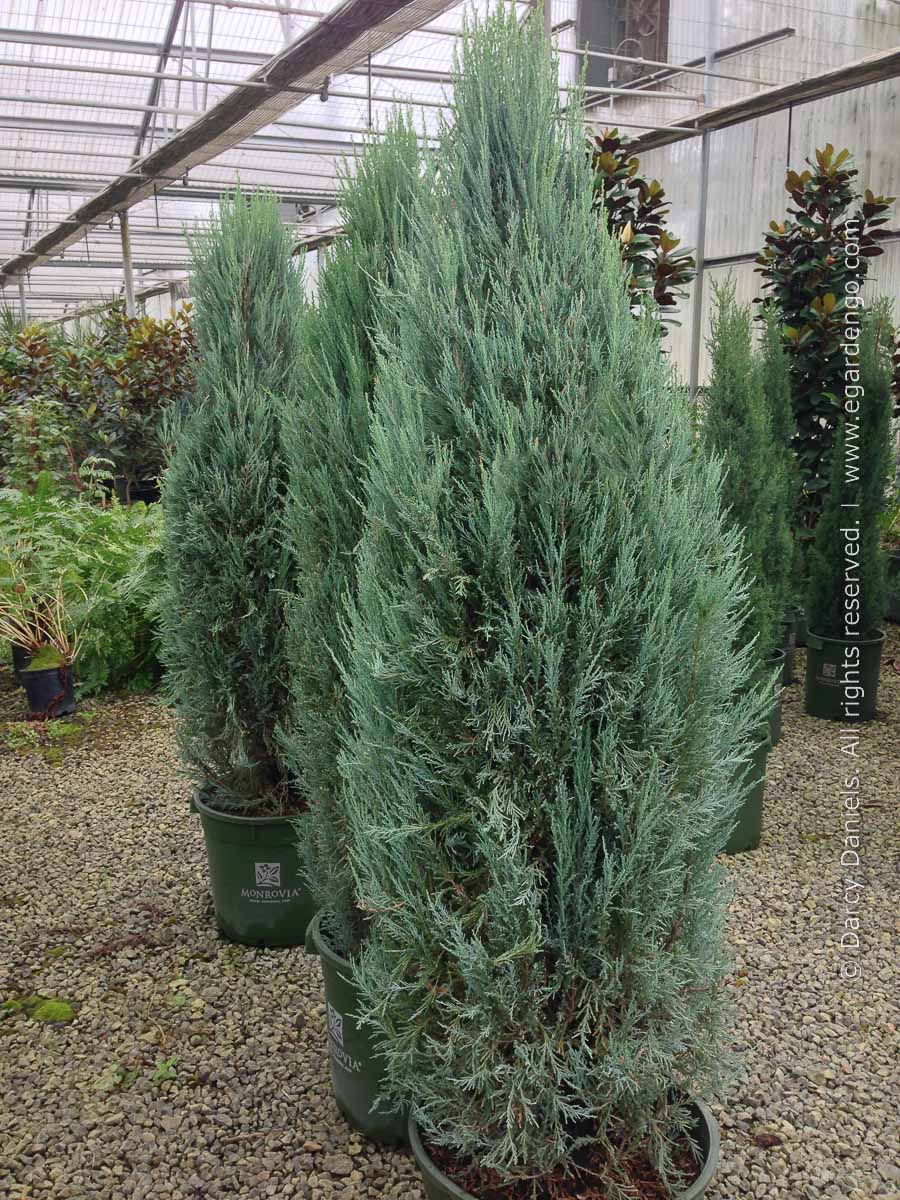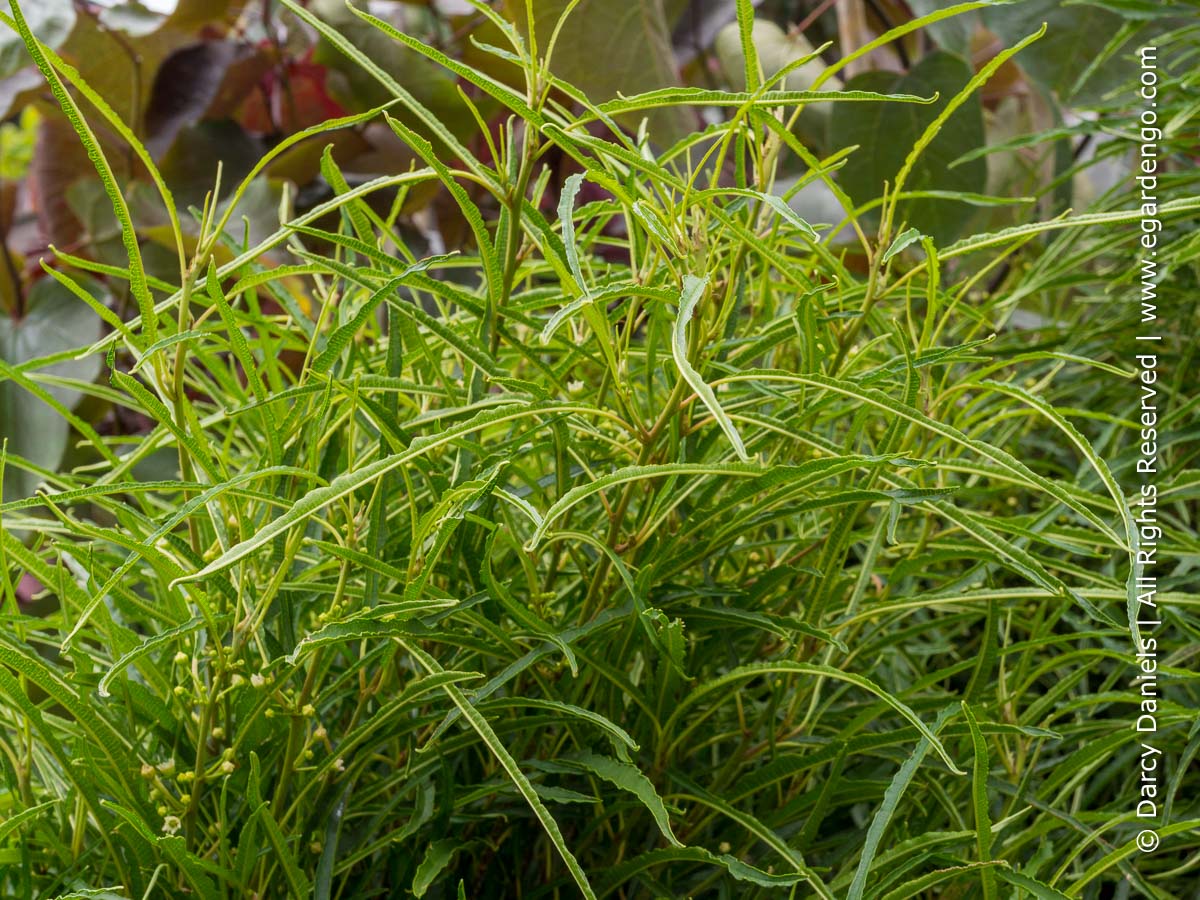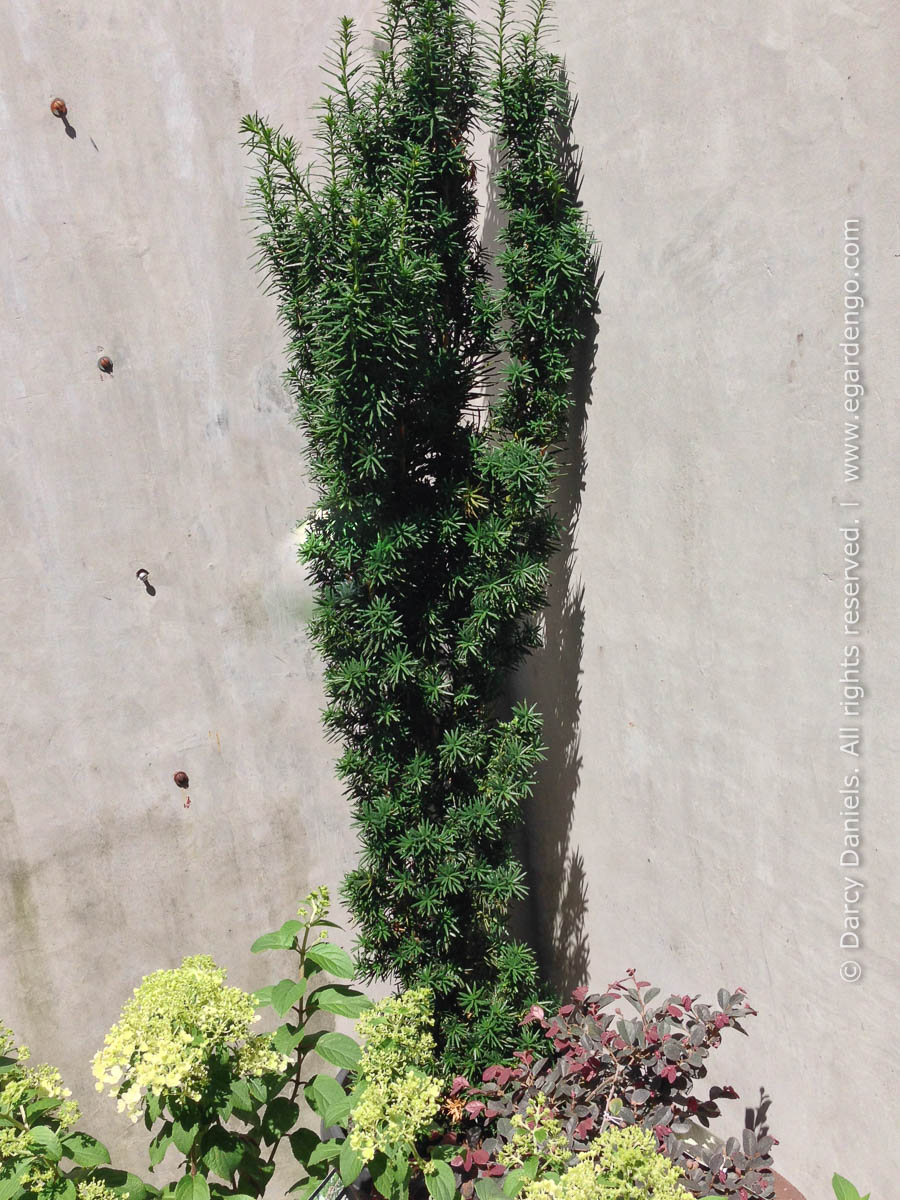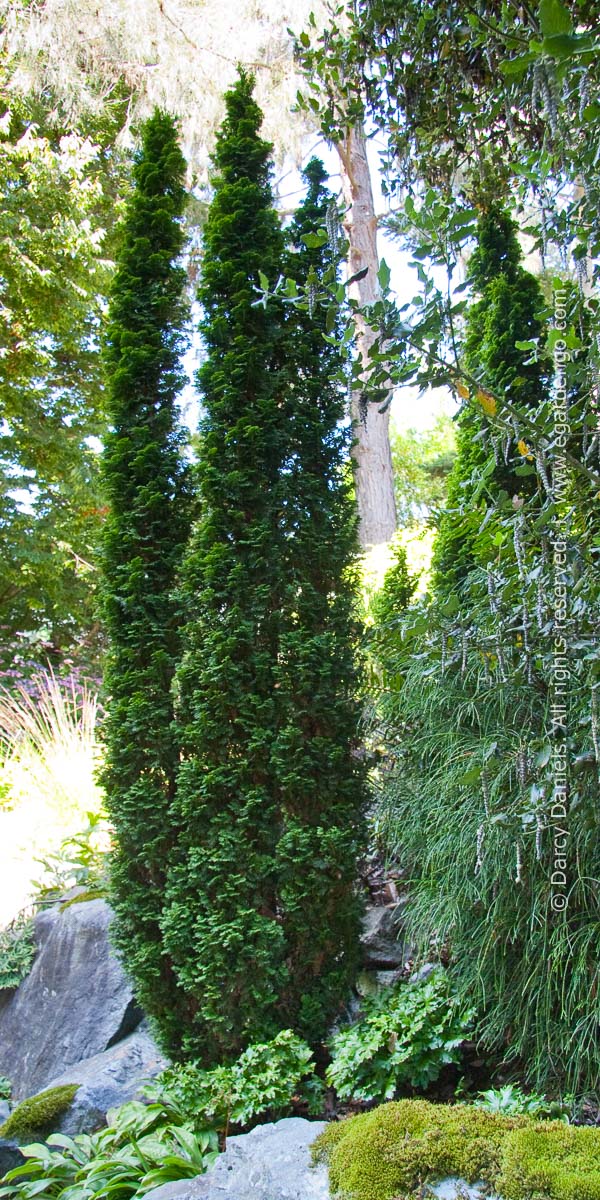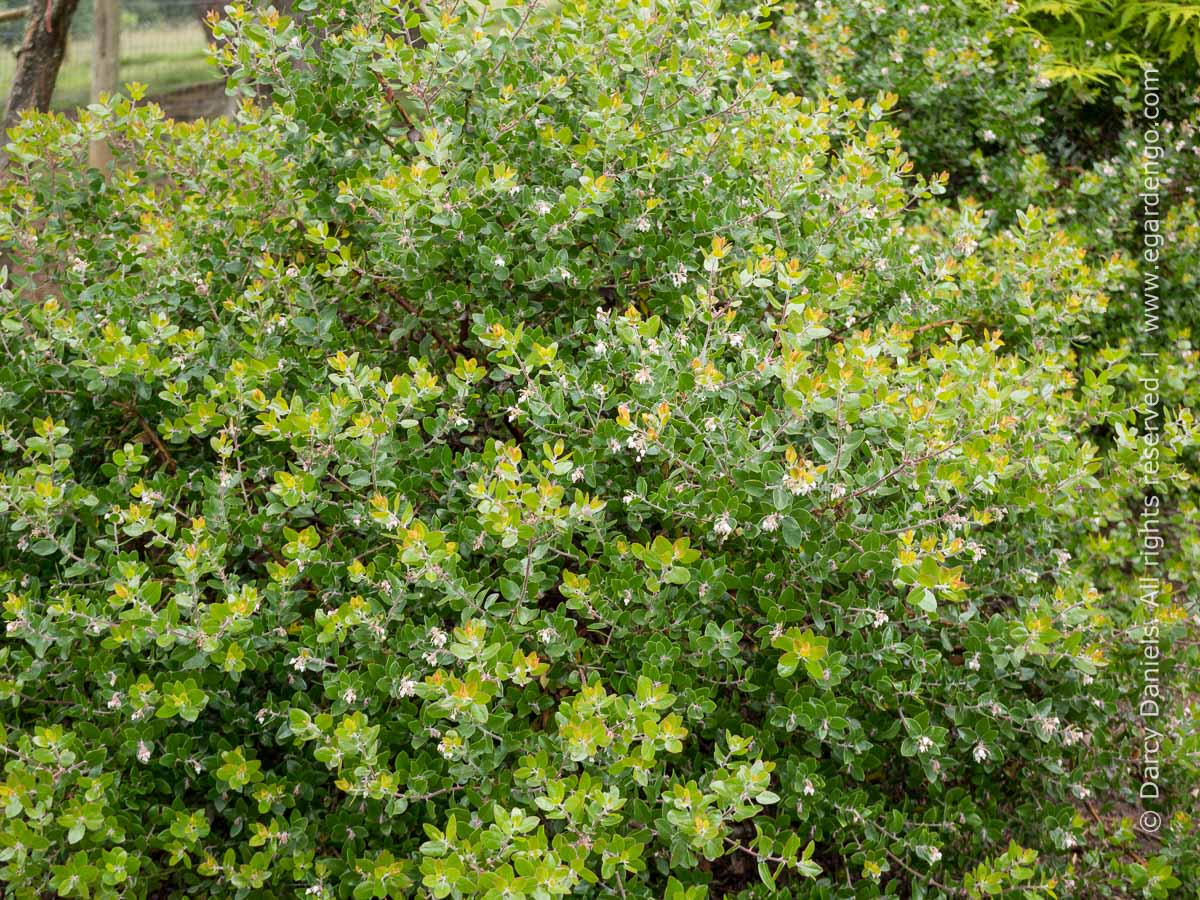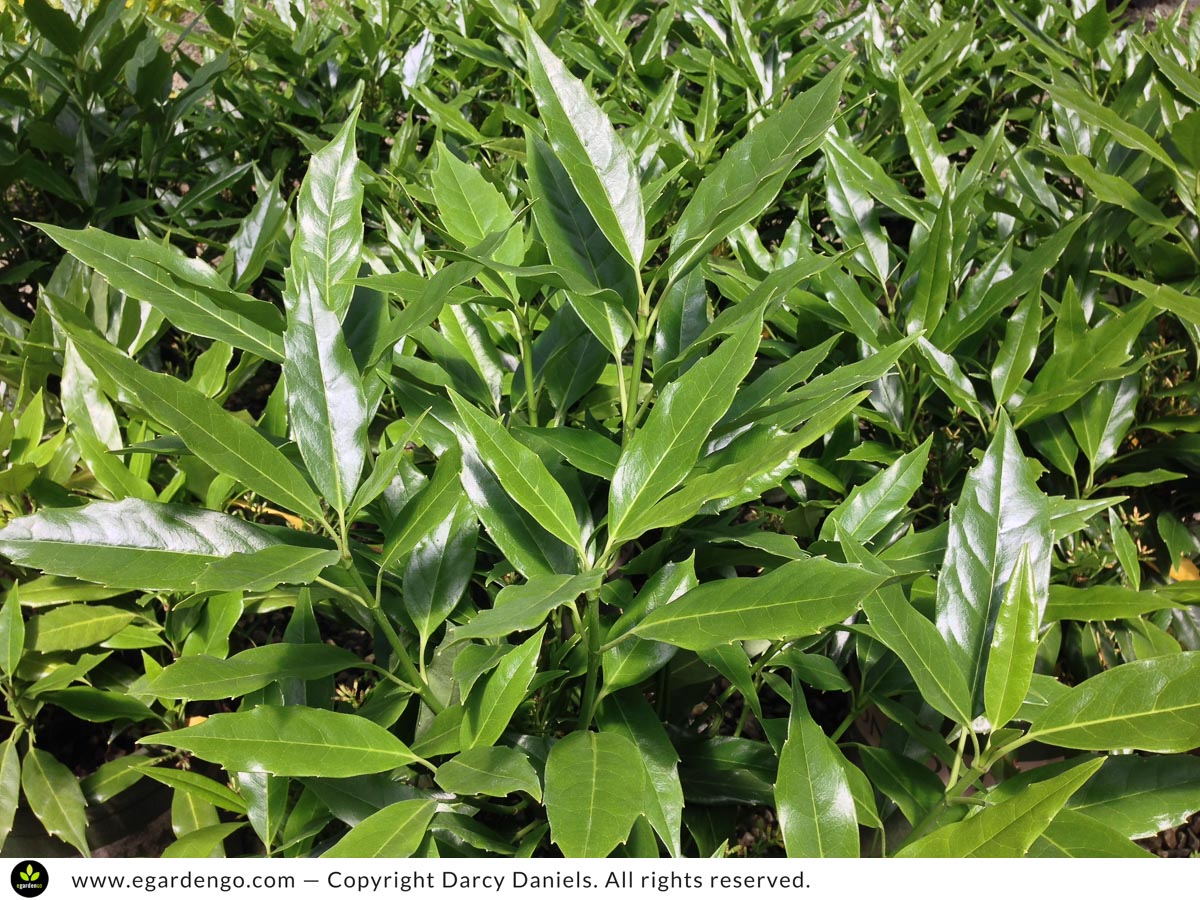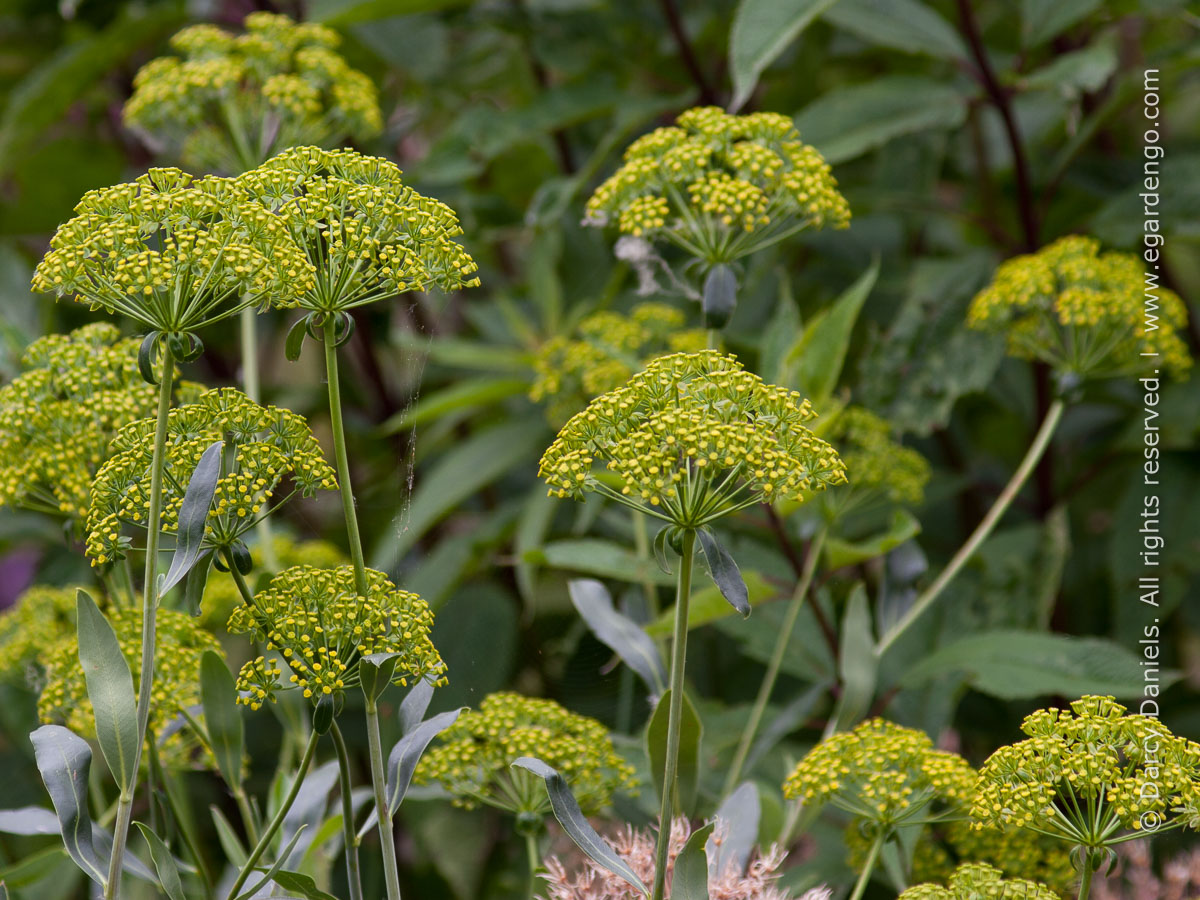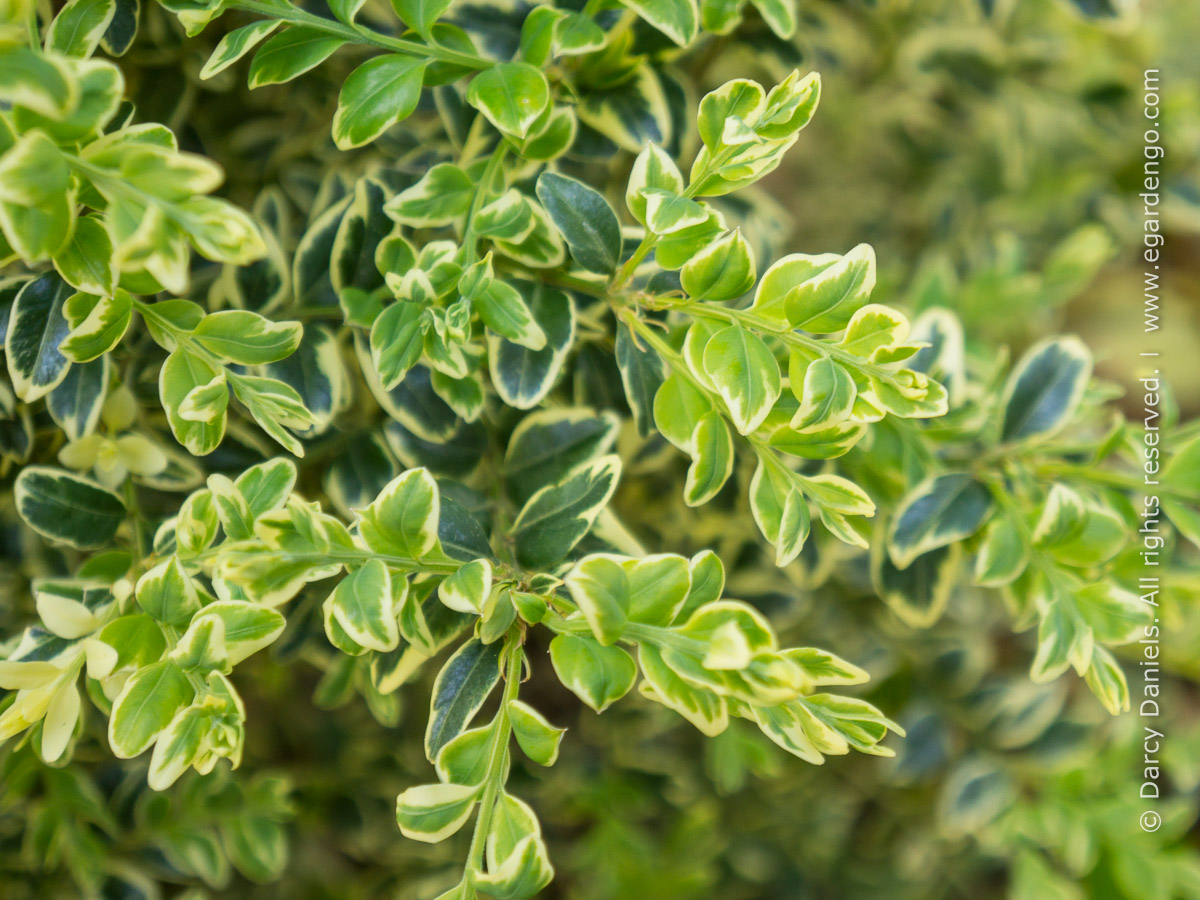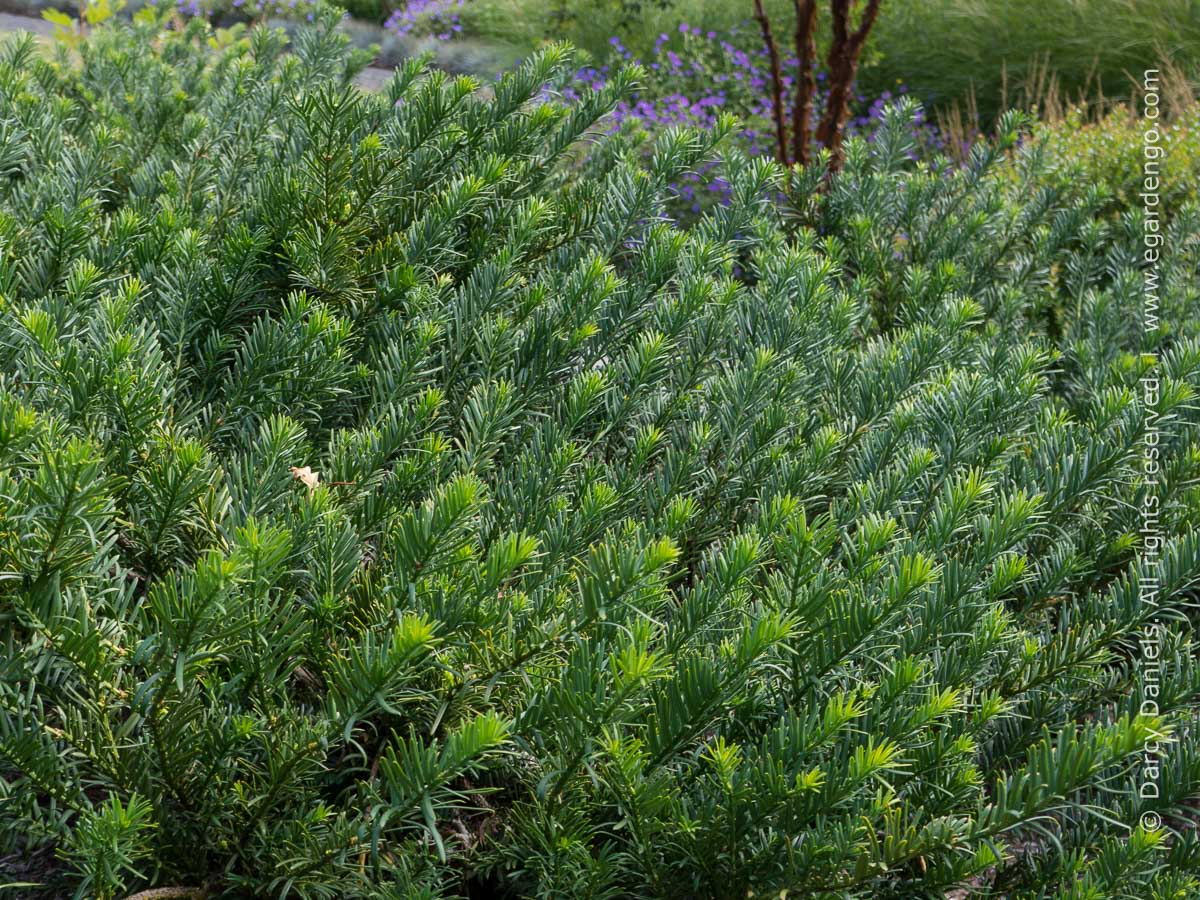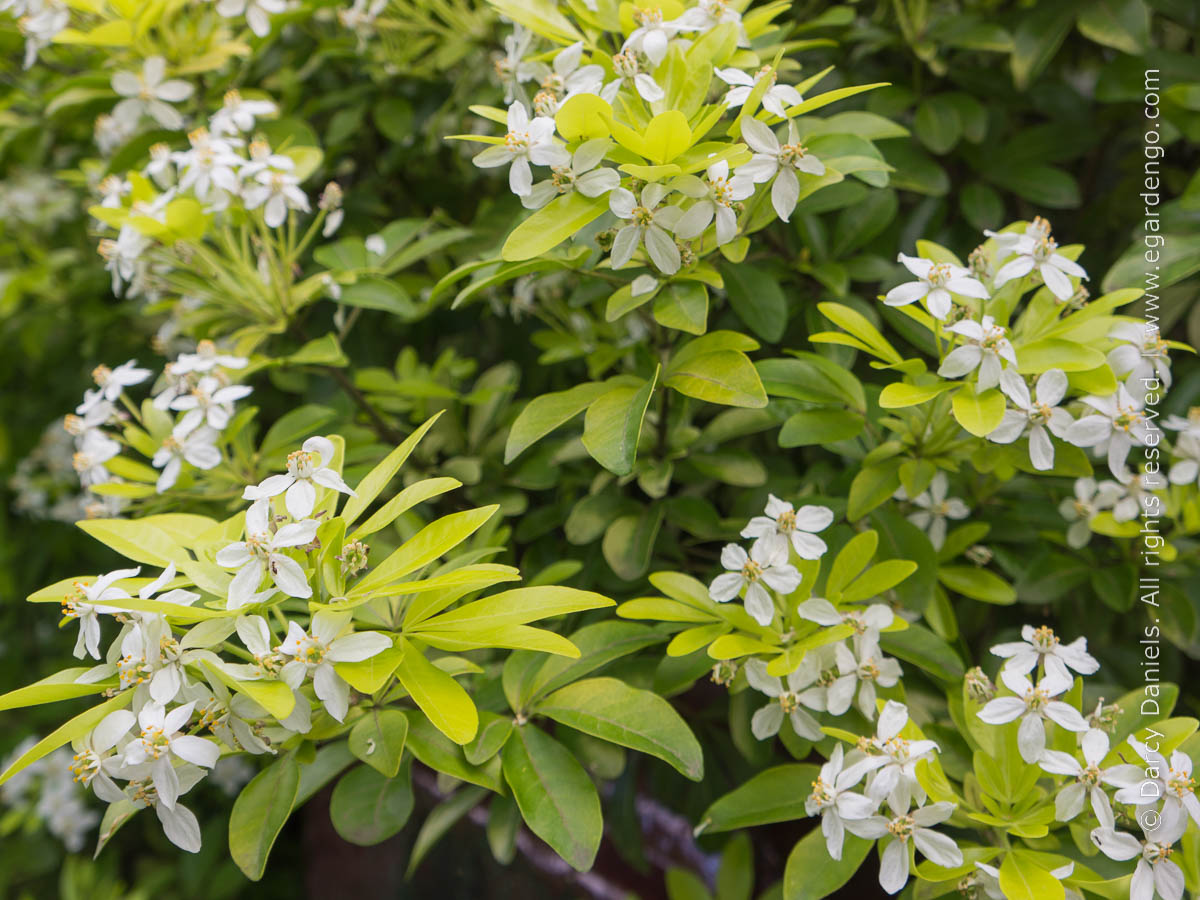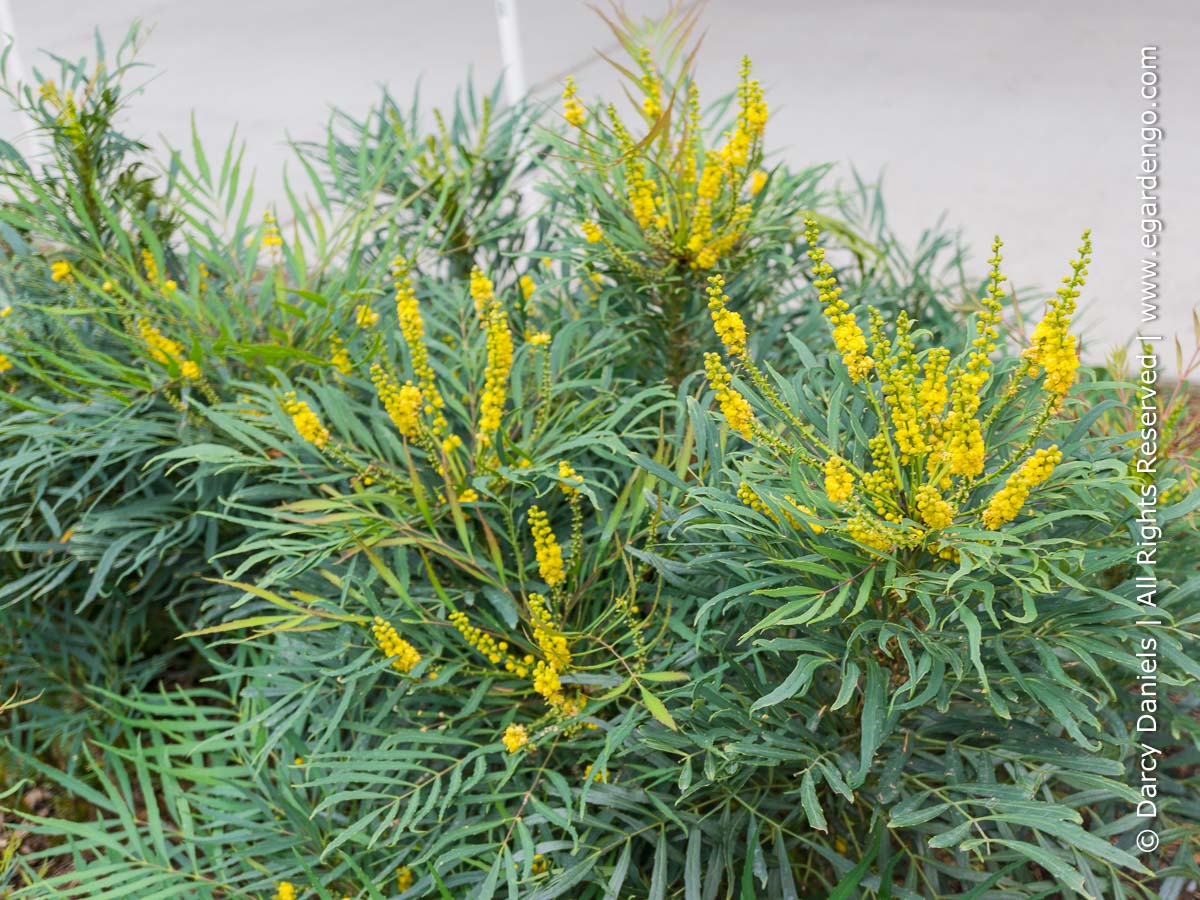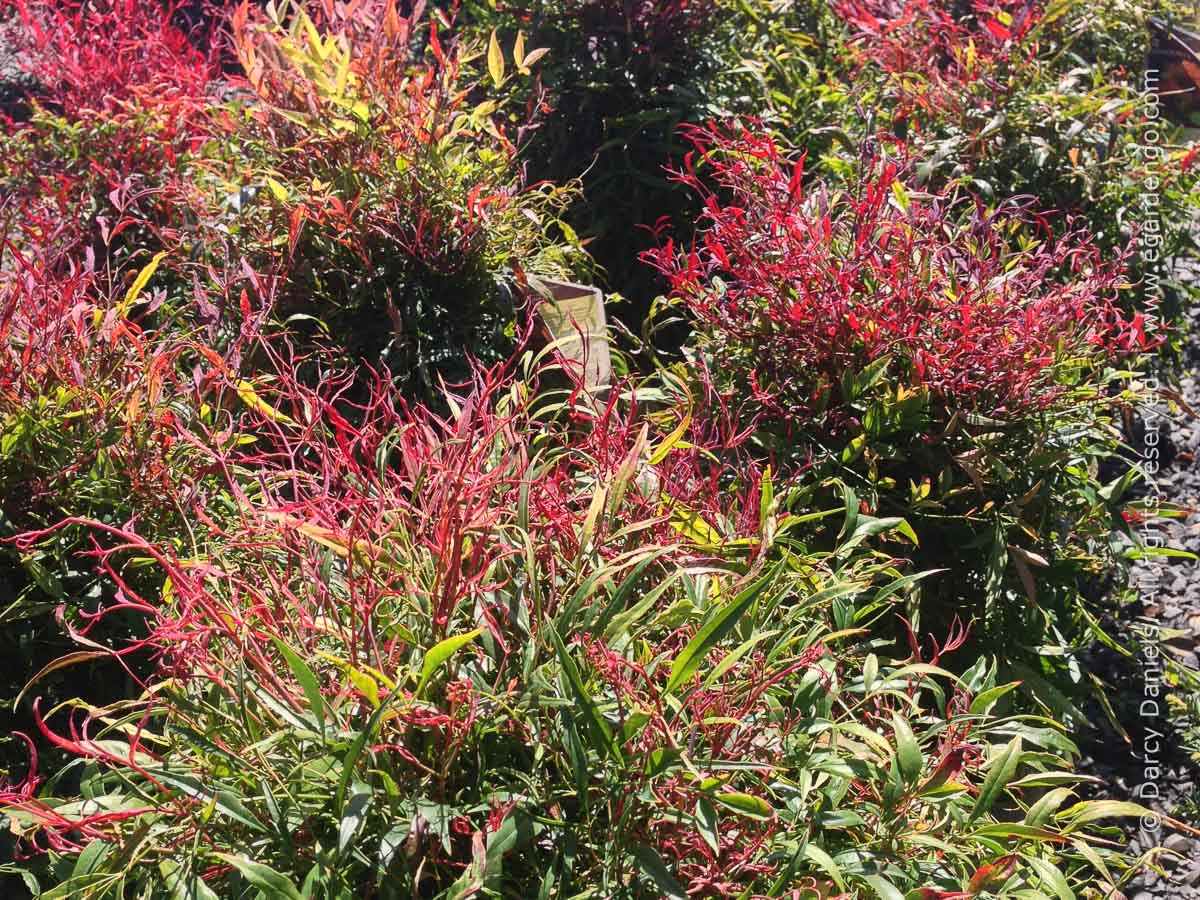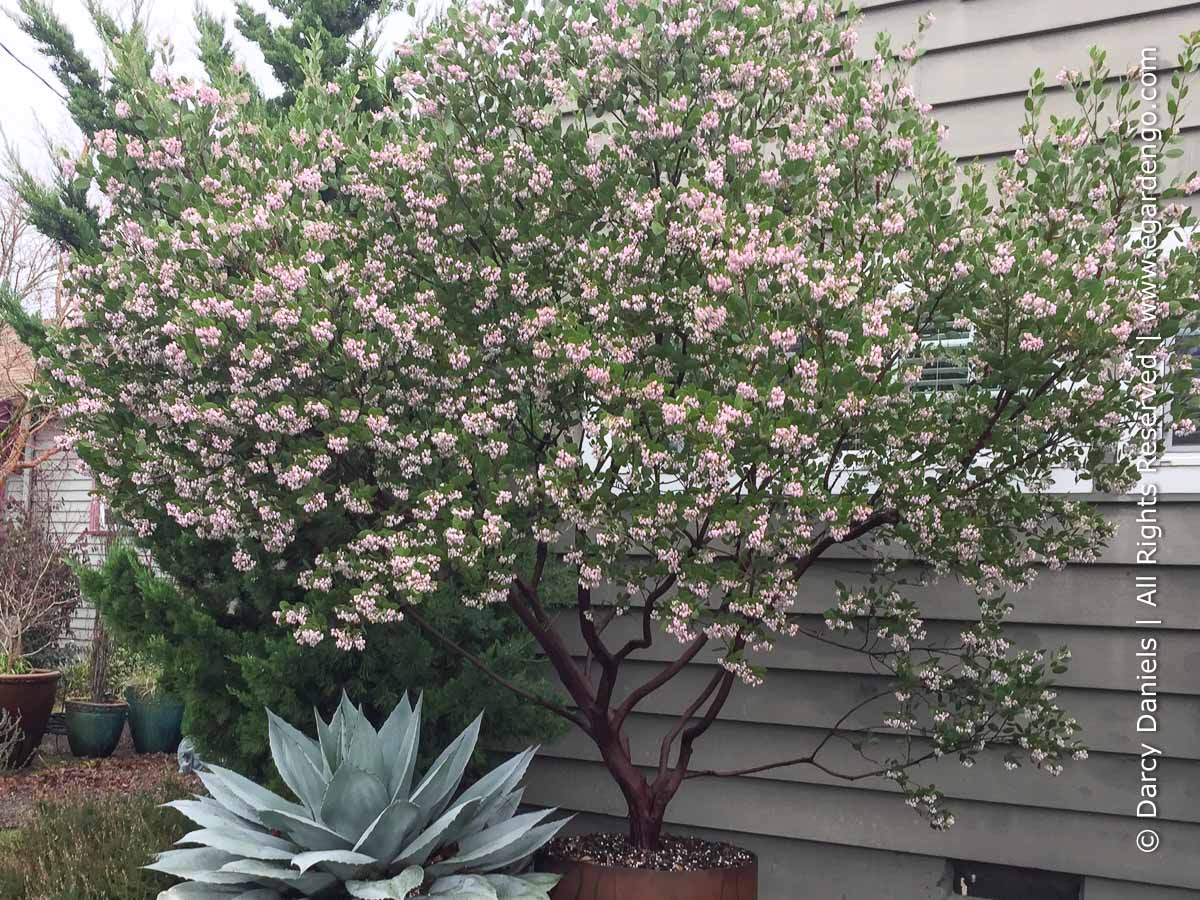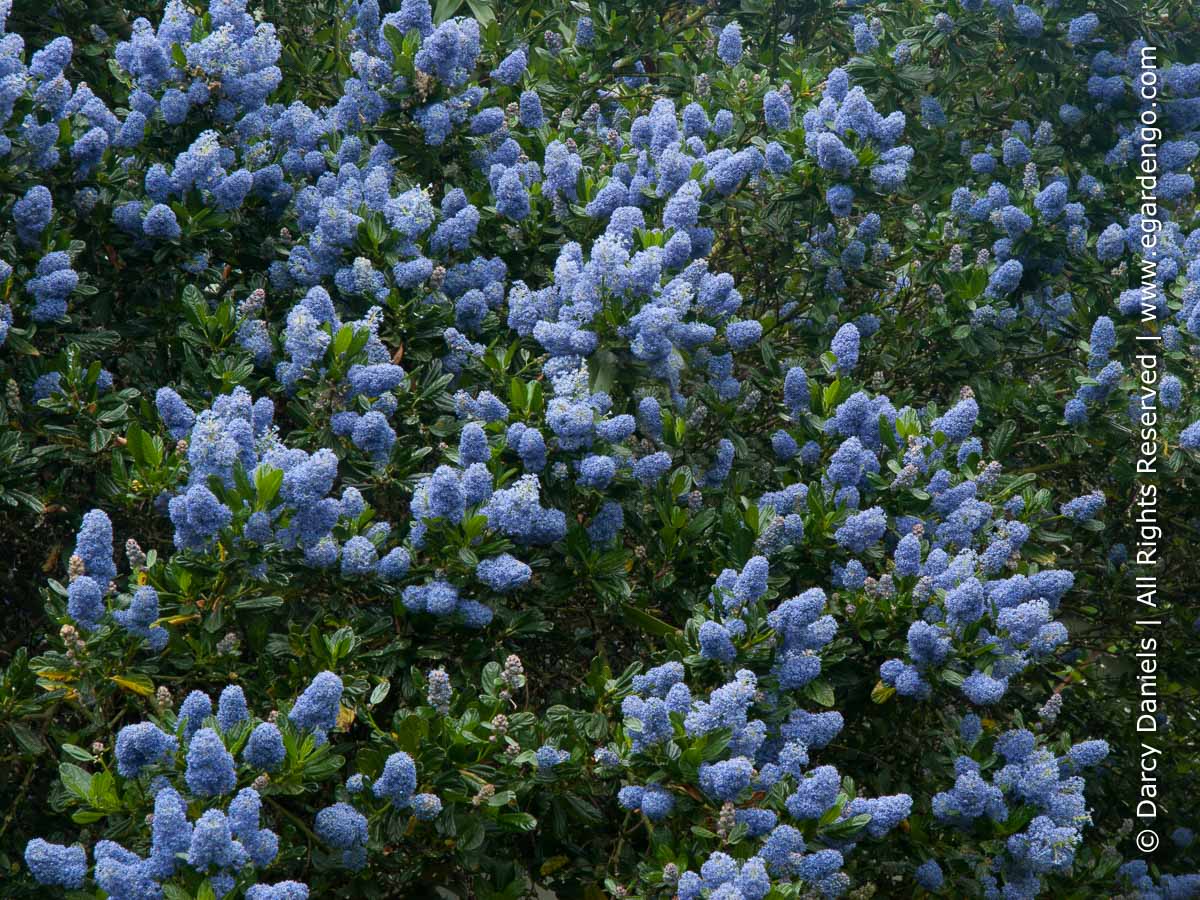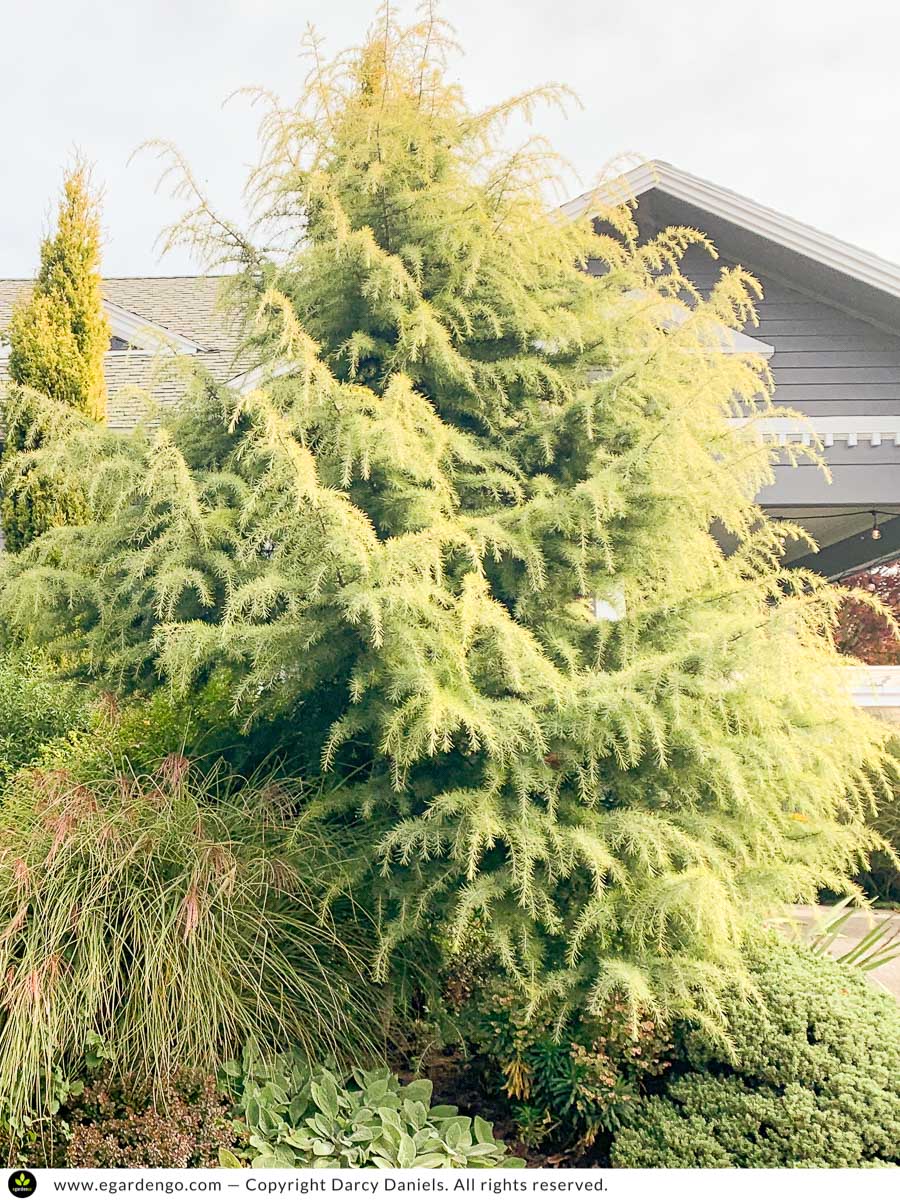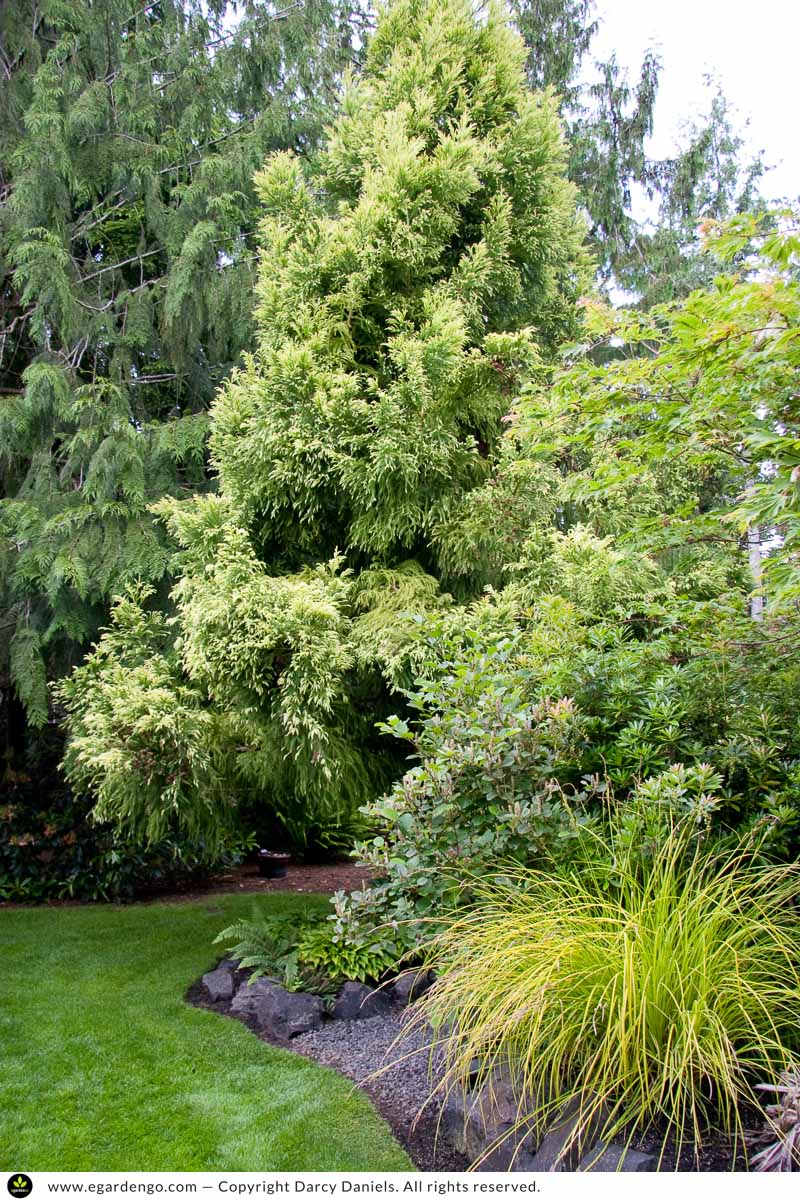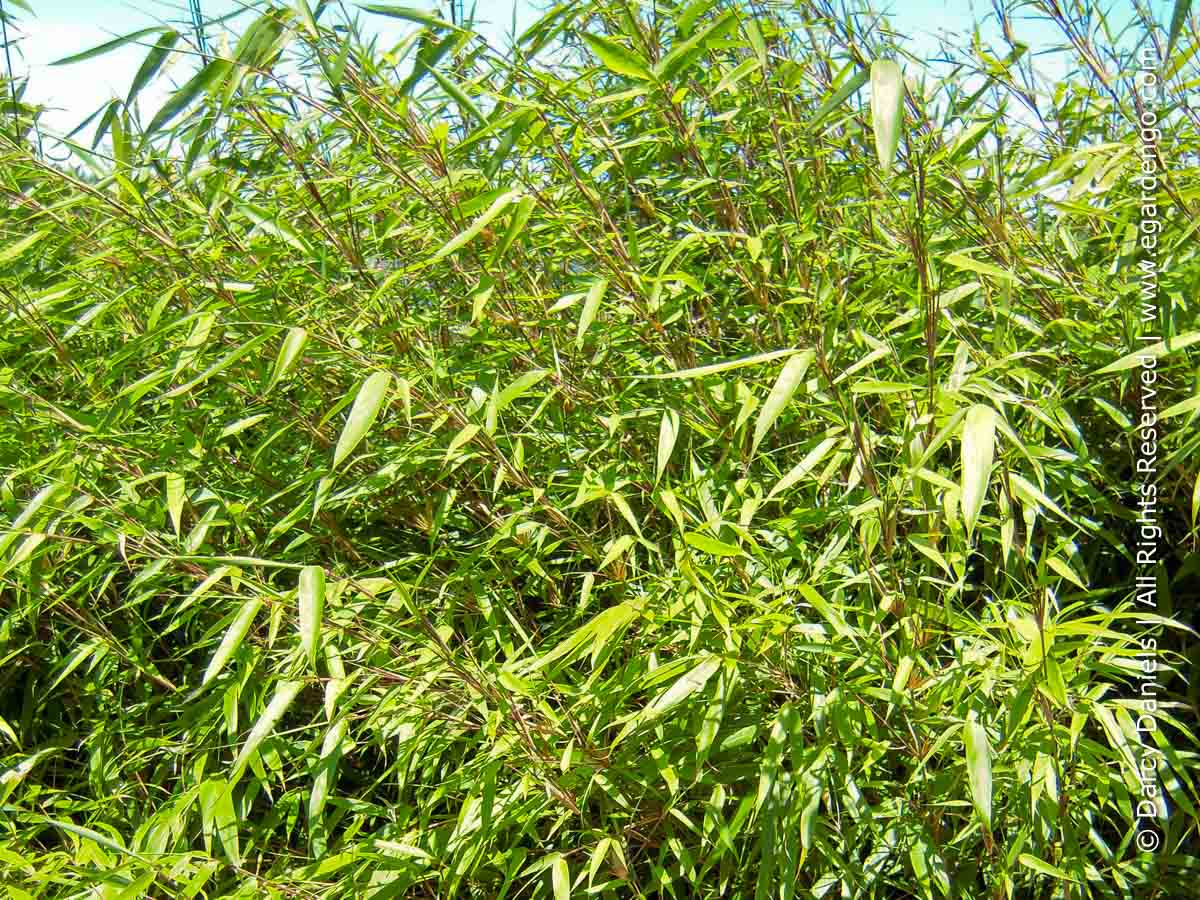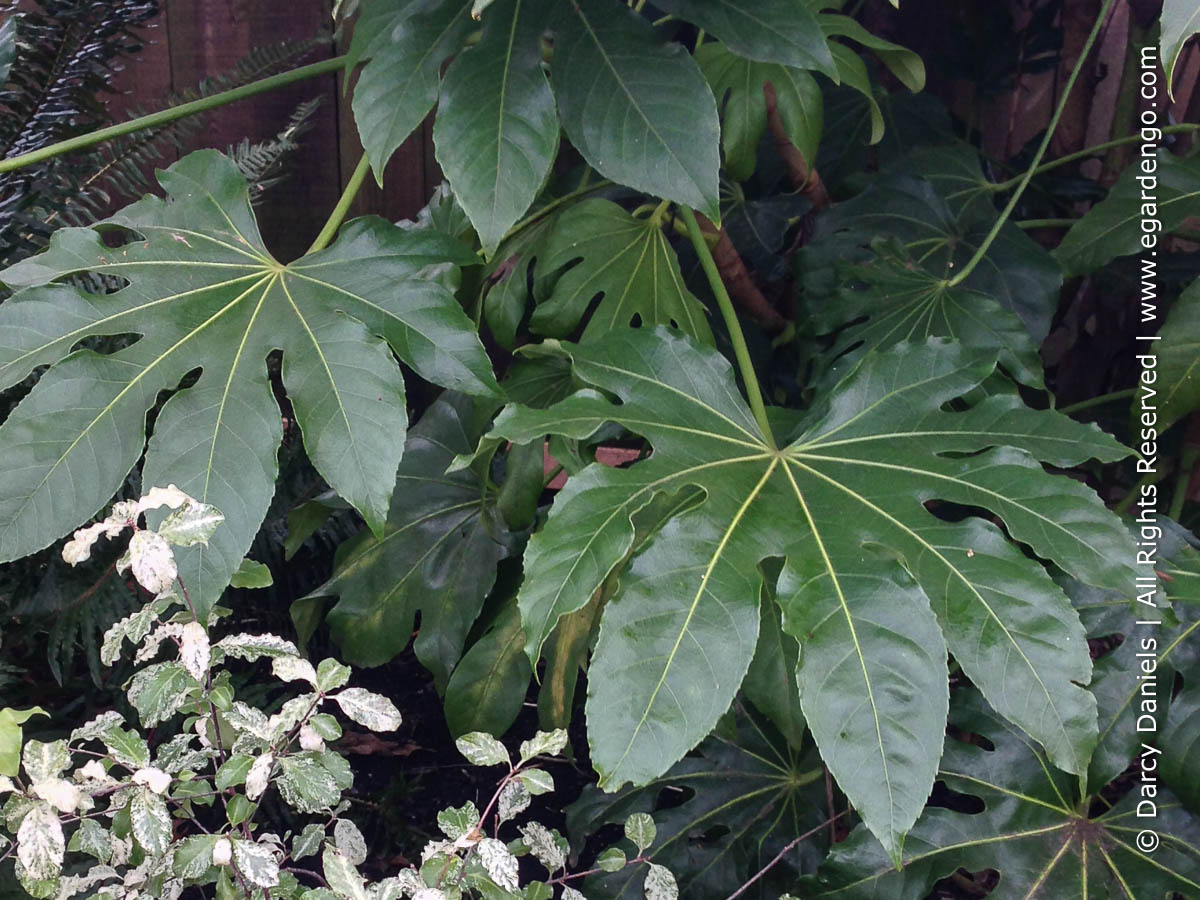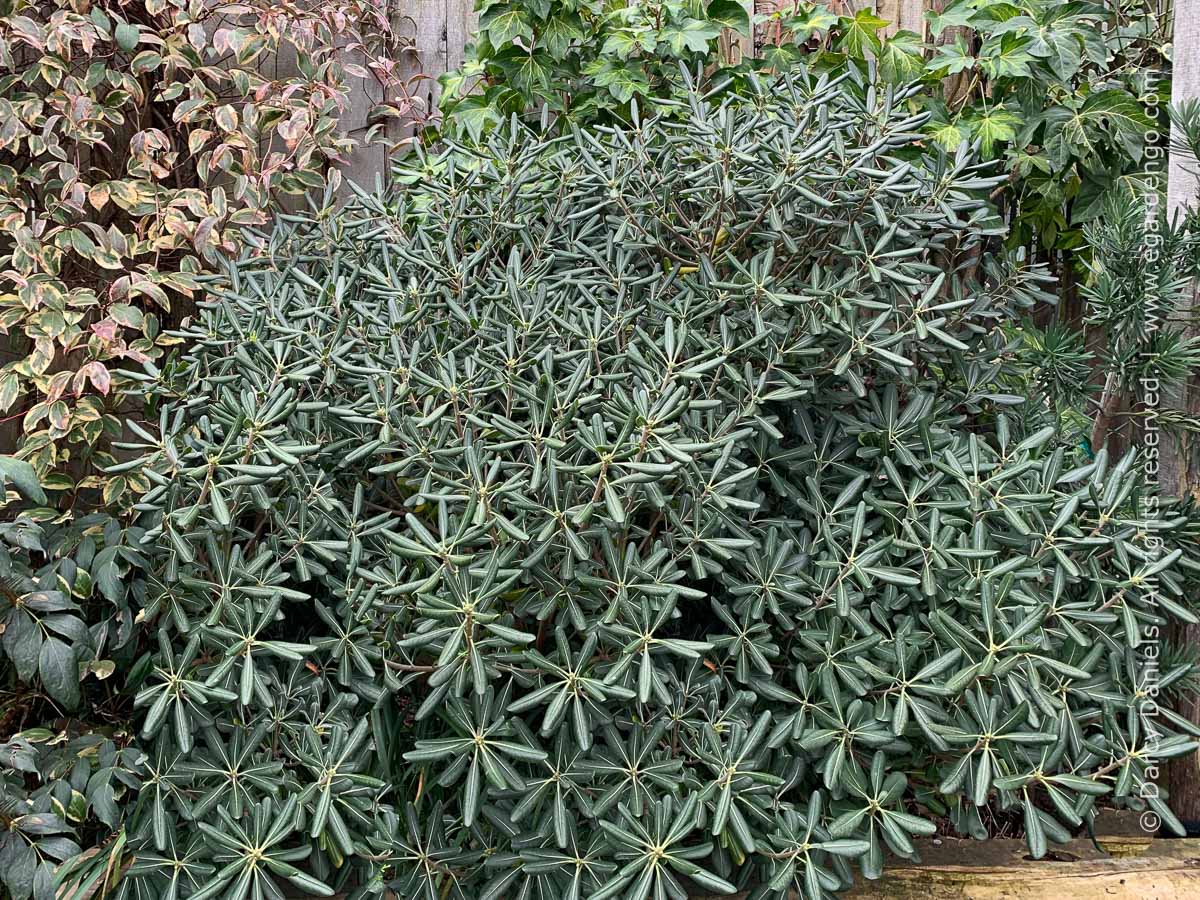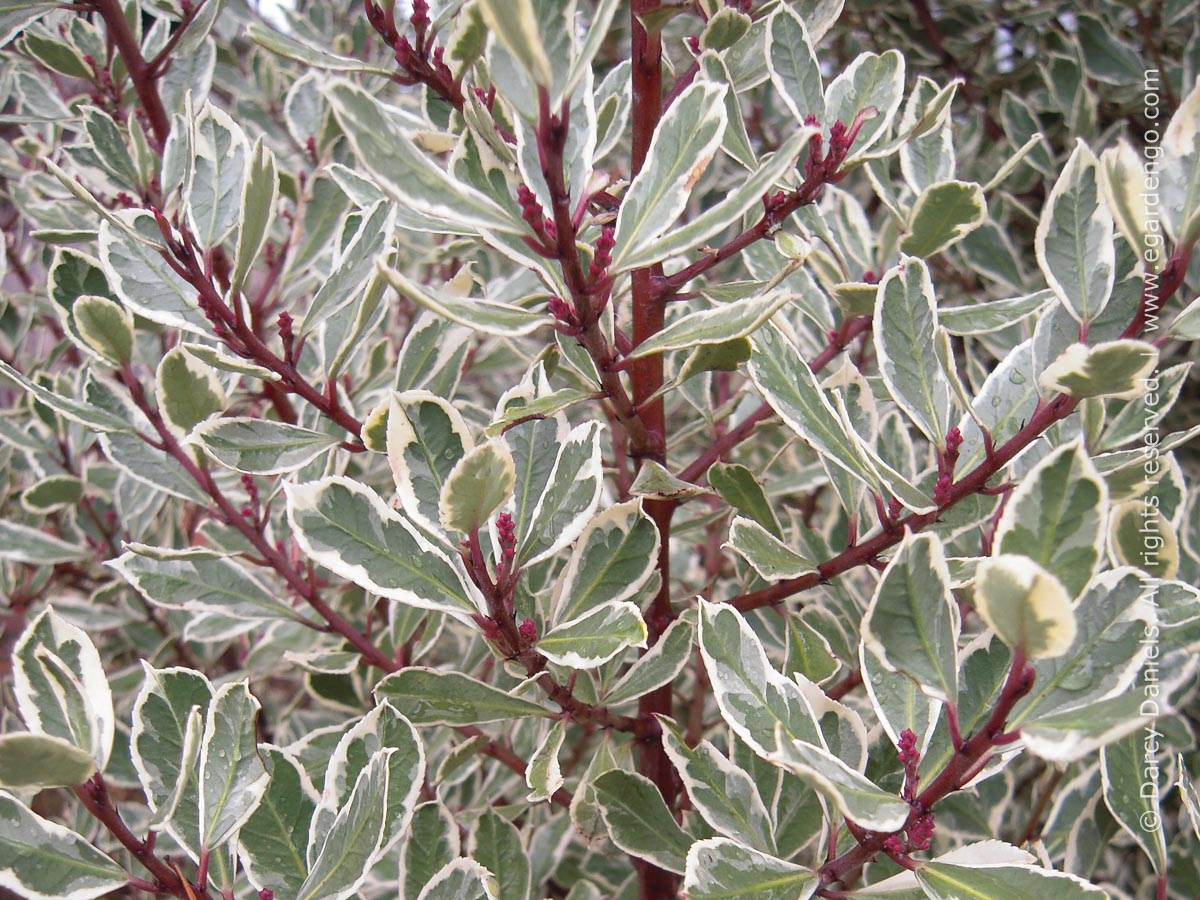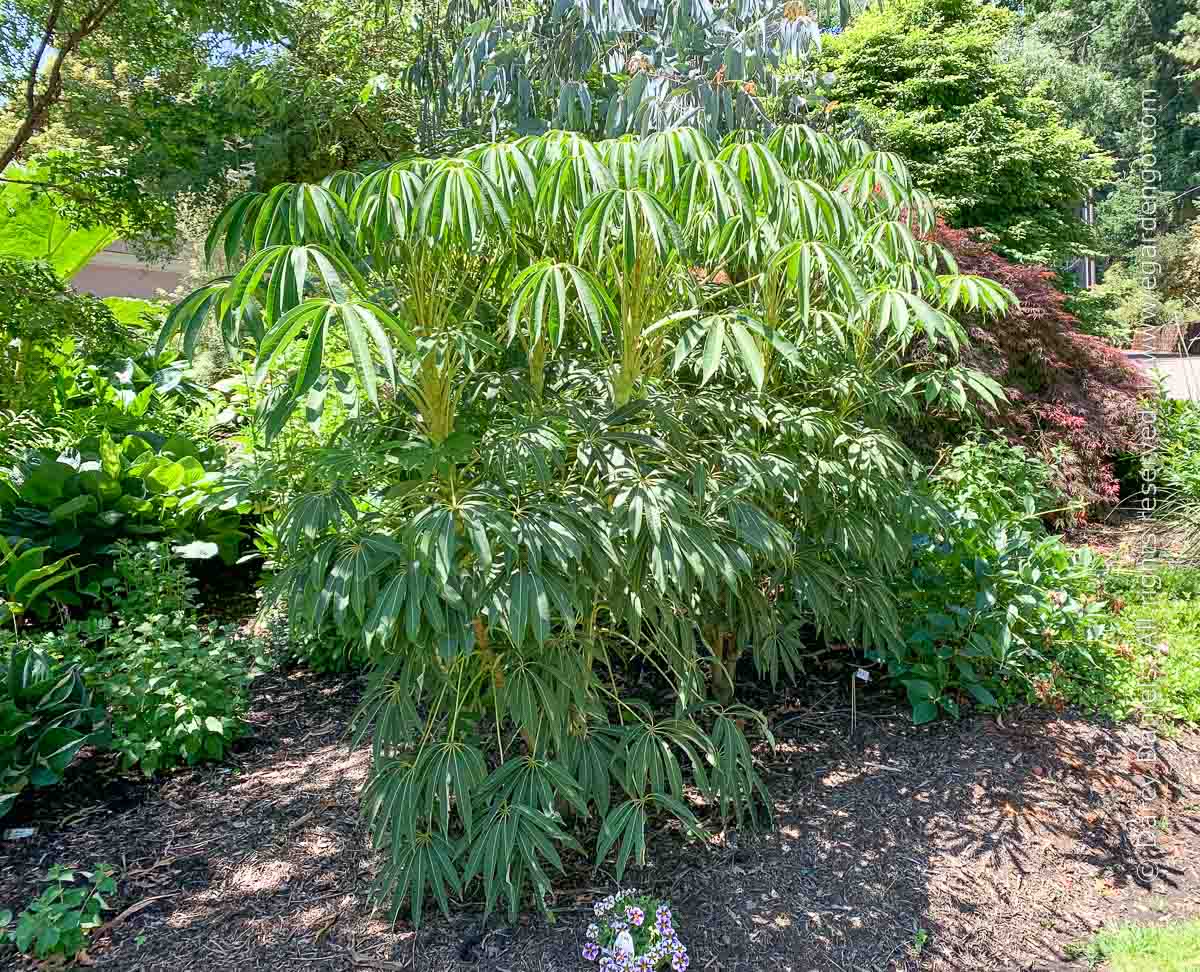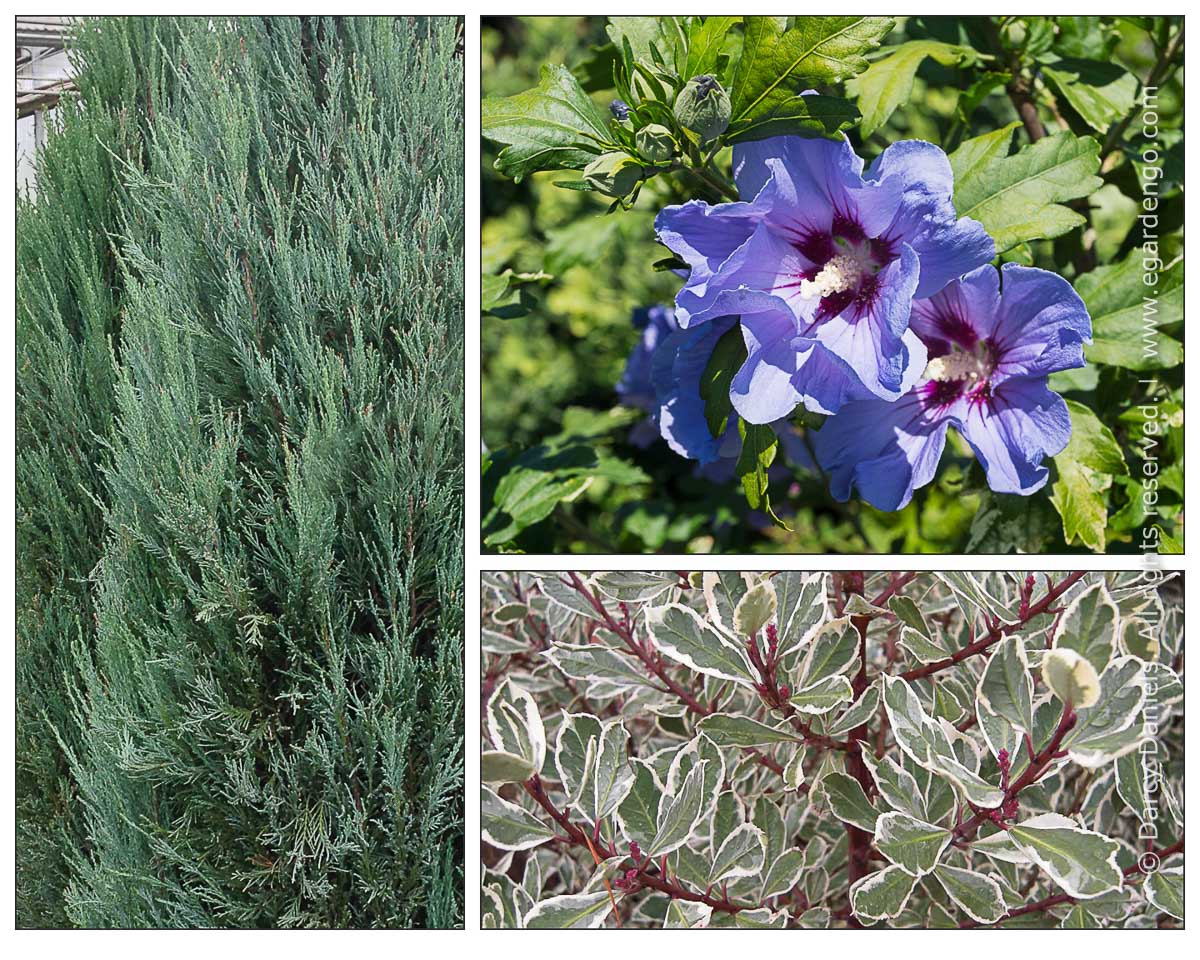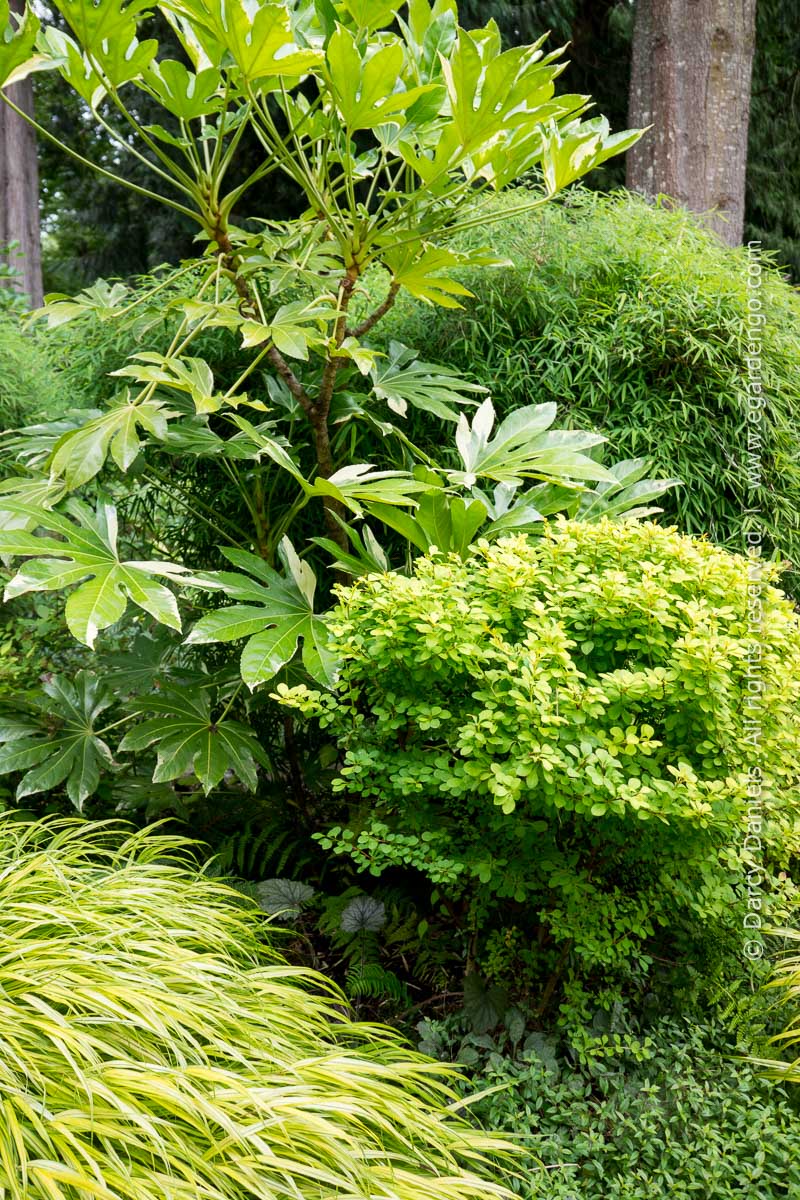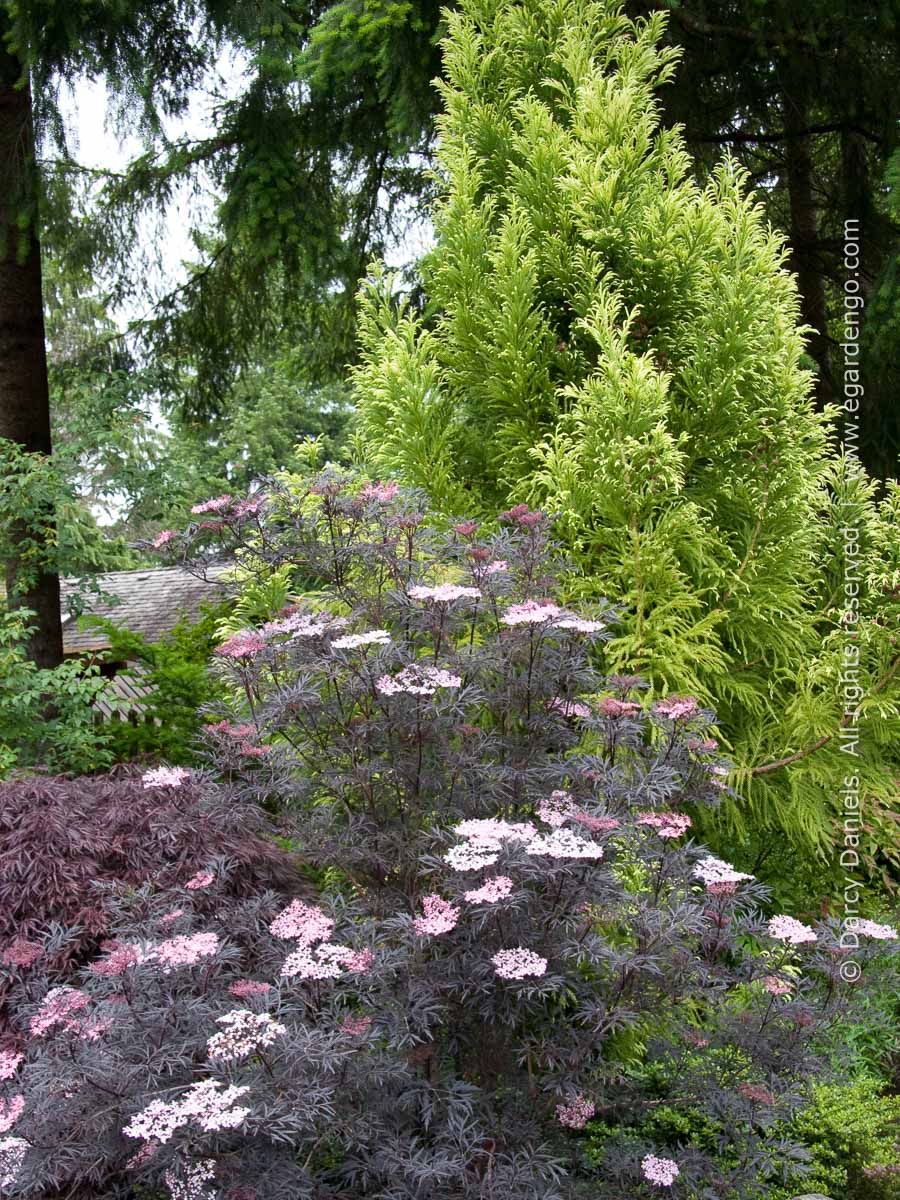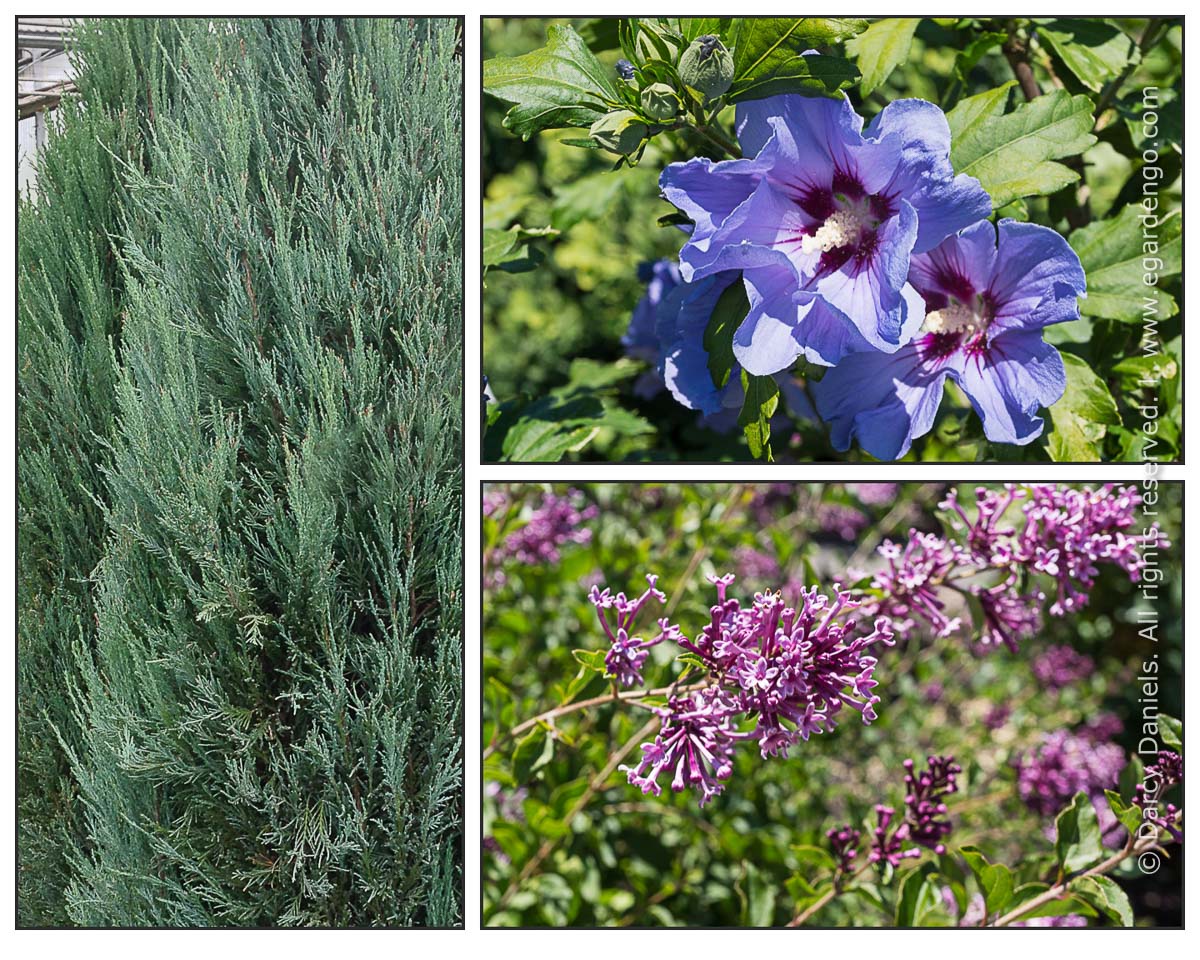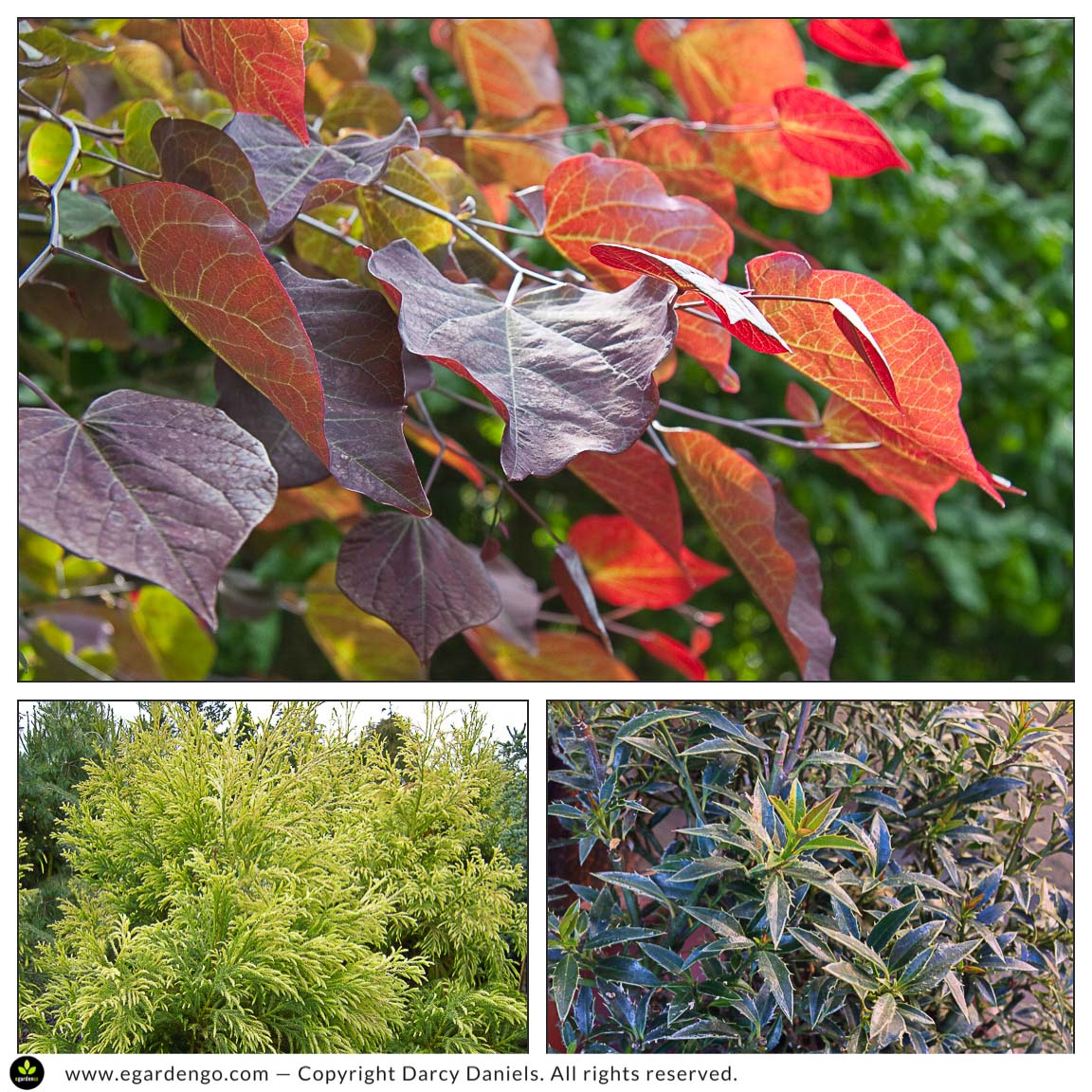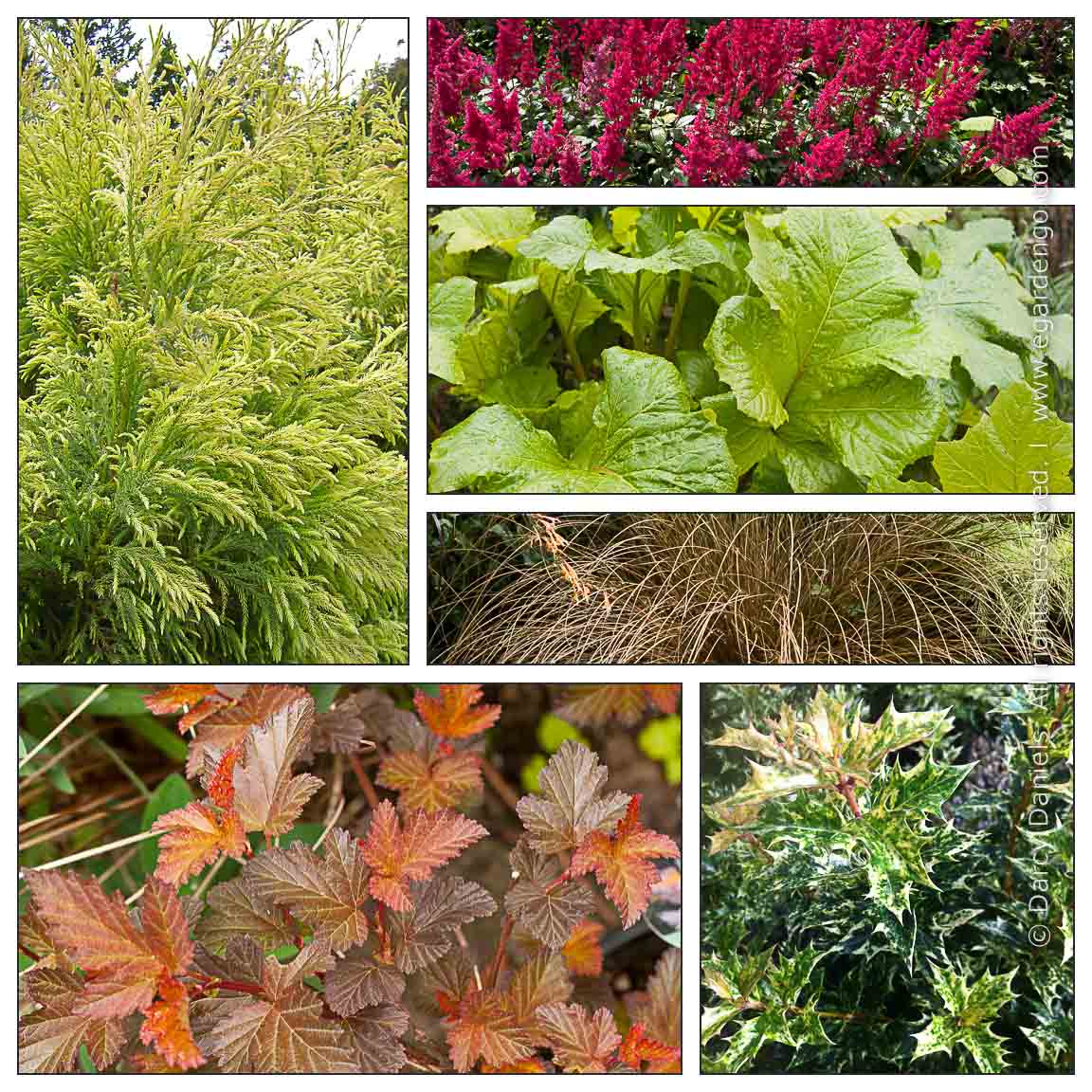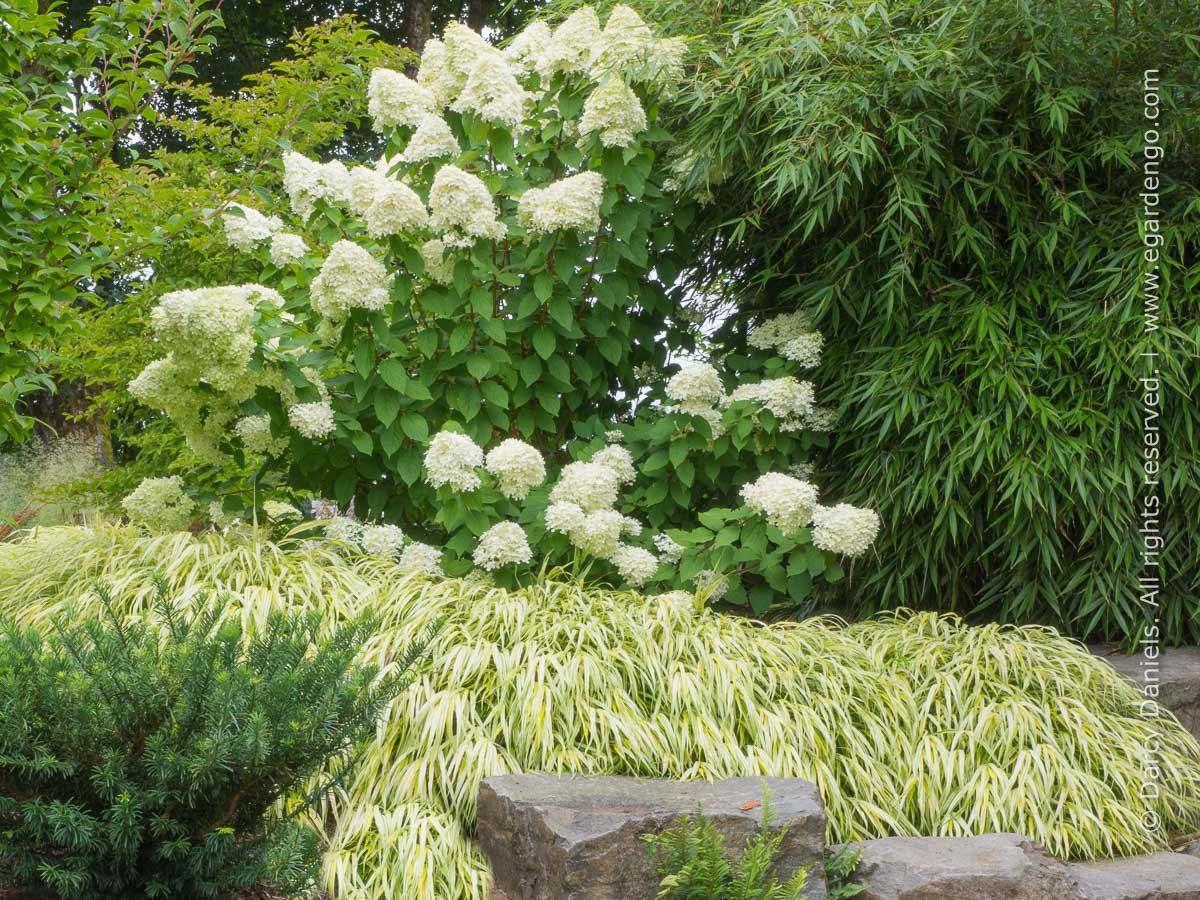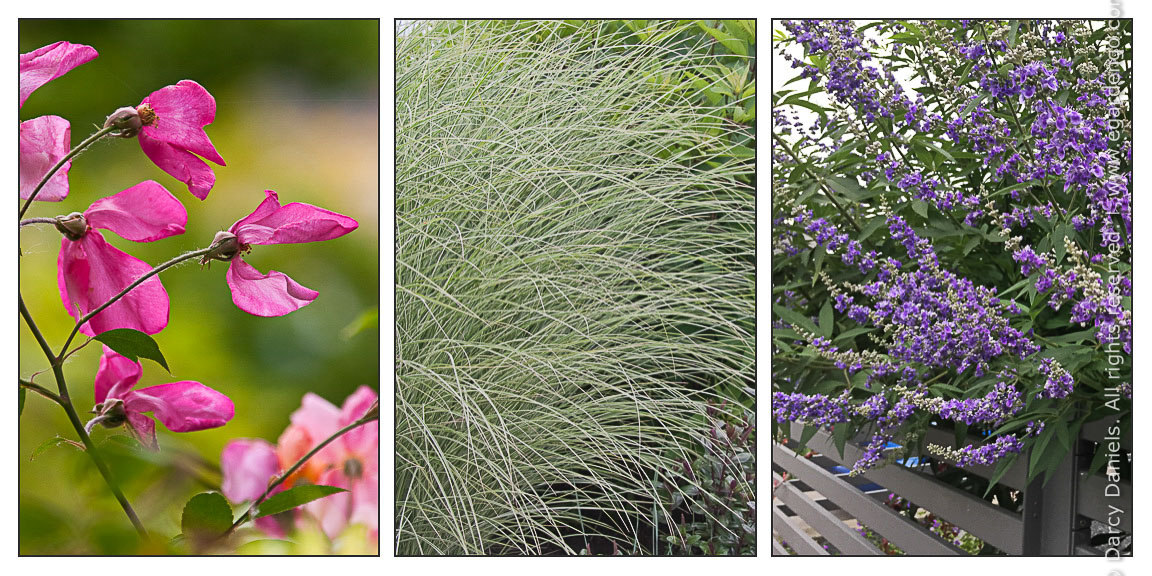Among the most common garden challenges homeowners encounter when landscaping their homes is the need to create privacy, screen an unsightly view, or divide outdoor spaces into distinct living areas. Selecting the right plants for the job is essential to ensure success and these five tips will get you going in the right direction.
- Limit Your Search
- Is Your Need Year-round or Seasonal?
- Repeat the Same Plant or Mix It Up:
- Be Creative When Positioning
- Use Our Powerful Search Features
1. Limit Your Search to Plants that Will Thrive in Your Conditions
First things first. Make sure you're only considering plants that are appropriate to your growing zone and the soil and water conditions you have on offer. If you're not sure what zone you're in, follow this link, enter your zip code in the widget in the upper left, and it will tell you your USDA zone. As you're browsing the site, make sure that you're focusing on plants that will grow in your zone. You'll also want to consider how much sun your site will get, how much water the plant needs, and the condition of the soil. These are big considerations and you'll want to bump any plants that don't make this first-round cut.
2. Is Your Need for Screening Year-round or Seasonal?
Next, consider whether your need for screening plants is seasonal or whether it's something you need to have in place all year. If year-round, you'll want to focus your search on evergreen plants. If you mostly need privacy during the the spring to fall months, you can add deciduous plants, even large-scale perennials and grasses, to the mix of plants under consideration.
3. Repeat the Same Plant or Mix It Up?
Should you repeat one plant, aligned in a row, or use a tapestry of various? What are your design goals? Oftentimes your choice will be driven by your aesthetic preferences, other times by practicality.
A hedge of one type of plant creates an orderly scene and is an invaluable and oft-used garden design device; like the walls inside your home, a wall of one type of plant can create space and division in your outdoor spaces as well. And everything is great with this approach, until it's not. The achilles heel of monocultural schemes is plant loss—one dead plant can spoil the whole bunch. Using a mix of of different plants can protect against such losses dismantling your design intent. I'm not suggesting that you absolutely avoid using a repeated plant, but you do want to be aware of the possible implications. I am suggesting that you stick with reliable, predictable plants to use in this manner.
4. Be Flexible and Creative When Situating the Plants to Provide the Best Screen
Determine the ideal size and proper position of the plants. Do remember that screening plants set back from your property boundaries can work very well; no need to line them up in a narrow perimeter bed running along your property's edge. More interesting and equally effective, a carefully positioned tree set into the interior of your garden can provide screening and shelter. This is an especially effective means of providing privacy from looming neighboring buildings: think about how sheltered you feel when sitting under an outdoor umbrella.
Here’s a tip for determining what size and shape of a plant you’ll need to achieve your screening objective and for honing in on its placement. Grab a broom, a stick—or better yet a large piece of cardboard—anything that can be a stand-in for the plant mass you’re considering and is light enough for your friend to hold overhead, if needed. Situate yourself in your garden where you’ll be hanging out—your patio, dining or seating area—and then ask a friend to go to different spots in your garden while holding the broom or cardboard above their head. This low-tech exercise will help you figure out how tall your plant needs to be to get the job done. What you find may surprise you. For example, a carefully positioned small tree or shrub can do a fantastic job of creating a privacy screen. Alternatively, hedges placed at the edges need to be pretty darn tall to hide a neighboring structure.
5. Search eGardenGo to Find the Best Screening Plants for Your Garden
You've now described what you're looking for and have effectively narrowed the field of possibilities from all the plants in the universe to a select few—the best plants for creating privacy in your garden situation. The design-centric filters baked into eGardenGo make it a great tool for identifying plants and combos for a particular purpose or design aesthetic. Criteria in hand, search the eGardenGo database of plants or refer to the list of possibilities below for ideas to get you started. Once you land on a plant to start with, use the database to get ideas of what to plant with it to round out your garden scene.
SOME OF THE BEST PLANTS TO SCREEN AND DIVIDE
Consider all of your needs and wants as you choose the best plant for your situation. Does it need to be evergreen to provide a year-round presence? Do you need to create privacy from neighbors or are you just trying to create a division of space in your own garden? Would you prefer the variety of a mixed hedge?
Below you'll find a sampling of plants for each of these needs. For even more ideas, search the eGardenGo database of plants and plant combinations.
Tall and Narrow Plants for Privacy
Columnar, evergreen shrubs are a classic solution for dividing space and for creating a screening in your garden. When you think "hedge" these are typically the types of plants that come to mind, though I've included some fresh and unexpected ideas that go beyond the typical tried-and-true.
Chamaecyparis nootkatensis 'Green Arrow'
Weeping Alaskan Yellow Cedar
Type:
Conifer, Tree
Exposure:
Full Sun, Full Sun, Part Sun, Part Shade, Filtered Sun, Open Shade, Open Shade
Zone:
4, 5, 6, 7, 8
Chamecyparis lawsoniania 'Wissel's Saguro'
Wissel's Saguro Lawson Cypress
Type:
Conifer, Tree
Exposure:
Full Sun, Part Sun, Part Shade, Full Shade, Afternoon Sun, Filtered Sun
Zone:
5, 6, 7, 8, 9
Cupressus macrocarpa 'Wilma Goldcrest'
Wilma Goldcrest Cypress
Type:
Conifer, Shrub
Exposure:
Full Sun, Part Sun, Part Shade, Full Shade
Zone:
7, 8, 9, 10
Cupressus sempervirens 'Monshel'
Tiny Tower Italian Cypress
Type:
Conifer, Shrub
Exposure:
Afternoon Sun, Full Sun, Part Sun, Reflected Heat
Zone:
10, 7, 8, 9
Cupressus sempervirens 'Swane's Golden'
Swane's Golden Italian Cypress
Type:
Shrub
Exposure:
Full Sun, Full Sun, Afternoon Sun, Reflected Heat
Zone:
7, 8, 9
Cupressus sempervirens 'Totem'
Totem Italian Cypress
Type:
Conifer, Shrub
Exposure:
Afternoon Sun, Full Sun, Part Sun, Reflected Heat
Zone:
10, 7, 8, 9
Juniperus scopulorum 'Blue Arrow'
Blue Arrow Juniper
Type:
Conifer, Shrub
Exposure:
Full Sun, Full Sun, Part Sun, Afternoon Sun, Reflected Heat
Zone:
4, 5, 6, 7, 8, 9
Rhamnus frangula 'Ron Williams' FINE LINE
Fine Line Alder Buckthorn
Type:
Shrub
Exposure:
Full Sun, Part Sun, Afternoon Sun, Part Shade, Morning Sun
Zone:
2, 3, 4, 5, 6, 7, 8
Taxus x media 'Bean Pole'
Bean Pole Yew
Type:
Conifer, Shrub
Exposure:
Full Sun, Full Sun, Part Sun, Part Shade, Full Shade, Full Shade, Morning Sun, Filtered Sun, Open Shade, Open Shade
Zone:
4, 5, 6, 7, 8, 9
Thuja occidentalis 'Degroot's Spire'
Compact Columnar Arborvitae
Type:
Conifer, Shrub
Exposure:
Full Sun, Full Sun, Part Sun, Part Shade, Morning Sun, Filtered Sun, Open Shade, Open Shade
Zone:
4, 5, 6, 7, 8
Divide Your Garden Into Rooms with These Plants
If you've figured out that a tall plant isn't essential, one of these shorter plants might be right for you. As a reminder, considering placement is just as important as height when it comes to picking the right plant or plants. A shorter, but carefully-situated, plant within your garden can be just as effective at providing privacy.
Arctostaphylos x 'Sunset'
Sunset Manzanita
Type:
Shrub
Exposure:
Afternoon Sun, Full Sun, Part Sun
Zone:
7, 8, 9
Aucuba japonica 'Serratifolia'
Sawtoothed Japanese Aucuba
Type:
Shrub
Exposure:
Deep Shade, Full Shade, Morning Sun, Open Shade, Part Shade
Zone:
10, 6, 7, 8, 9
Bupleurum fruticosum
Shrubby Hare's Ear
Type:
Shrub
Exposure:
Full Sun, Full Sun, Part Sun, Afternoon Sun, Reflected Heat
Zone:
6, 7, 8, 9
Buxus sempervirens 'Aureovariegata'
Variegated Boxwood
Type:
Shrub
Exposure:
Full Sun, Full Sun, Part Sun, Part Shade, Full Shade, Morning Sun, Filtered Sun, Open Shade, Open Shade
Zone:
6, 7, 8, 9
Cephalotaxus harringtonia 'Duke Gardens'
Duke Gardens Japanese Plum Yew
Type:
Conifer, Shrub
Exposure:
Morning Sun, Filtered Sun, Open Shade
Zone:
6, 7, 8, 9
Choisya ternata 'Sundance'
Sundance Mexican Orange
Type:
Shrub
Exposure:
Full Sun, Part Sun, Part Shade, Afternoon Sun, Morning Sun, Filtered Sun, Open Shade, Open Shade
Zone:
7, 8, 9, 10
Mahonia eurybracteata 'Soft Caress'
Soft Caress Mahonia
Type:
Shrub
Exposure:
Filtered Sun, Full Shade, Morning Sun, Open Shade, Part Shade, Part Sun
Zone:
10, 11, 7, 8, 9
Nandina domestica 'Monfar'
Sienna Sunrise Heavenly Bamboo
Type:
Shrub
Exposure:
Full Sun, Full Sun, Part Sun, Part Shade, Afternoon Sun, Filtered Sun
Zone:
6, 7, 8, 9, 10
Create a Mixed Hedge for Variety and Resilience
A mixed hedge gives you an opportunity to enjoy a variety of different plants and avoids putting all your eggs in one basket. In other words, if one plant fails and needs to be replaced, it won't be glaringly obvious.
Arctostaphylos x 'Austin Griffiths'
Austin Griffith Manzanita
Type:
Shrub
Exposure:
Afternoon Sun, Full Sun, Reflected Heat
Zone:
10, 7, 8, 9
Ceanothus impressus 'Victoria'
Victoria California Lilac
Type:
Shrub
Exposure:
Full Sun, Full Sun, Part Sun, Afternoon Sun, Reflected Heat
Zone:
7, 8, 9
Cedrus deodara 'Silver Mist'
Silver Mist Deodar Cedar
Type:
Conifer, Shrub
Exposure:
Full Sun
Zone:
6, 7, 8, 9
Cryptomeria japonica 'Sekkan Sugi'
Golden Japanese Cedar
Type:
Conifer, Shrub, Tree
Exposure:
Morning Sun, Filtered Sun, Open Shade
Zone:
6, 7, 8, 9
Fargesia robusta
clumping bamboo
Type:
Bamboo, Shrub
Exposure:
Full Sun, Full Sun, Part Sun, Morning Sun, Filtered Sun, Open Shade, Open Shade
Zone:
7, 8, 9
Fatsia Japonica
Japanese Aralia
Type:
Shrub
Exposure:
Part Shade, Full Shade, Full Shade, Morning Sun, Filtered Sun, Open Shade, Open Shade, Deep Shade
Zone:
7, 8, 9, 10
Mahonia x media 'Charity'
Hybrid Mahonia
Type:
Shrub
Exposure:
Morning Sun, Filtered Sun
Zone:
7, 8, 9, 10
Pittosporum tobira 'Tall and Tough'
Japanese mock-orange
Type:
Shrub
Exposure:
Full Sun, Full Sun, Part Sun, Afternoon Sun, Morning Sun, Filtered Sun
Zone:
7, 8, 9, 10
Rhamnus alaternus 'Argentovariegata'
Variegated Italian Buckthorn
Type:
Shrub
Exposure:
Full Sun, Full Sun, Part Sun, Part Shade, Afternoon Sun, Morning Sun
Zone:
7, 8, 9, 10
Schefflera taiwaniana 'Yuan Shan'
Hardy Schefflera
Type:
Shrub
Exposure:
Full Sun, Full Sun, Part Sun, Morning Sun, Open Shade, Open Shade
Zone:
7, 8, 9, 10
Plant Combos That Make Good Screens
-
Drought Tolerant Shrub Trio Makes Easy-care Hedgerow
Zone: 7, 8, 9
view combo
Exposure: Afternoon Sun, Full Sun, Reflected Heat, Full Sun
-
Foliage Vignette for Woodland in Shades of Green and Gold
Zone: 7, 8
view combo
Exposure: Filtered Sun, Morning Sun, Part Shade, Part Sun
-
Gold and Burgundy Hedge with Great Foliage and Seasonal Flower
Zone: 6, 7, 8, 9
view combo
Exposure: Full Sun, Part Sun, Full Sun
-
Gorgeous Shrub Trio Creates an Easy-care Hedge
Zone: 5, 6, 7, 8
view combo
Exposure: Afternoon Sun, Full Sun
-
Low Maintenance Shrub Screen with Fabulous Foliage
Zone: 7, 8, 9
view combo
Exposure: Afternoon Sun, Full Sun, Part Sun, Full Sun
-
Mixed Foliage Border with Red Blooms as Accent
Zone: 7, 8, 9
view combo
Exposure: Filtered Sun, Morning Sun, Part Shade, Part Sun
-
Simple Mixed Border in Shades of Green and Yellow
Zone: 7, 8, 9
view combo
Exposure: Open Shade, Filtered Sun, Morning Sun, Open Shade, Part Shade, Part Sun
-
Trio of Low Water Plants for Deciduous Screen
Zone: 6, 7, 8, 9
view combo
Exposure: Afternoon Sun, Full Sun

